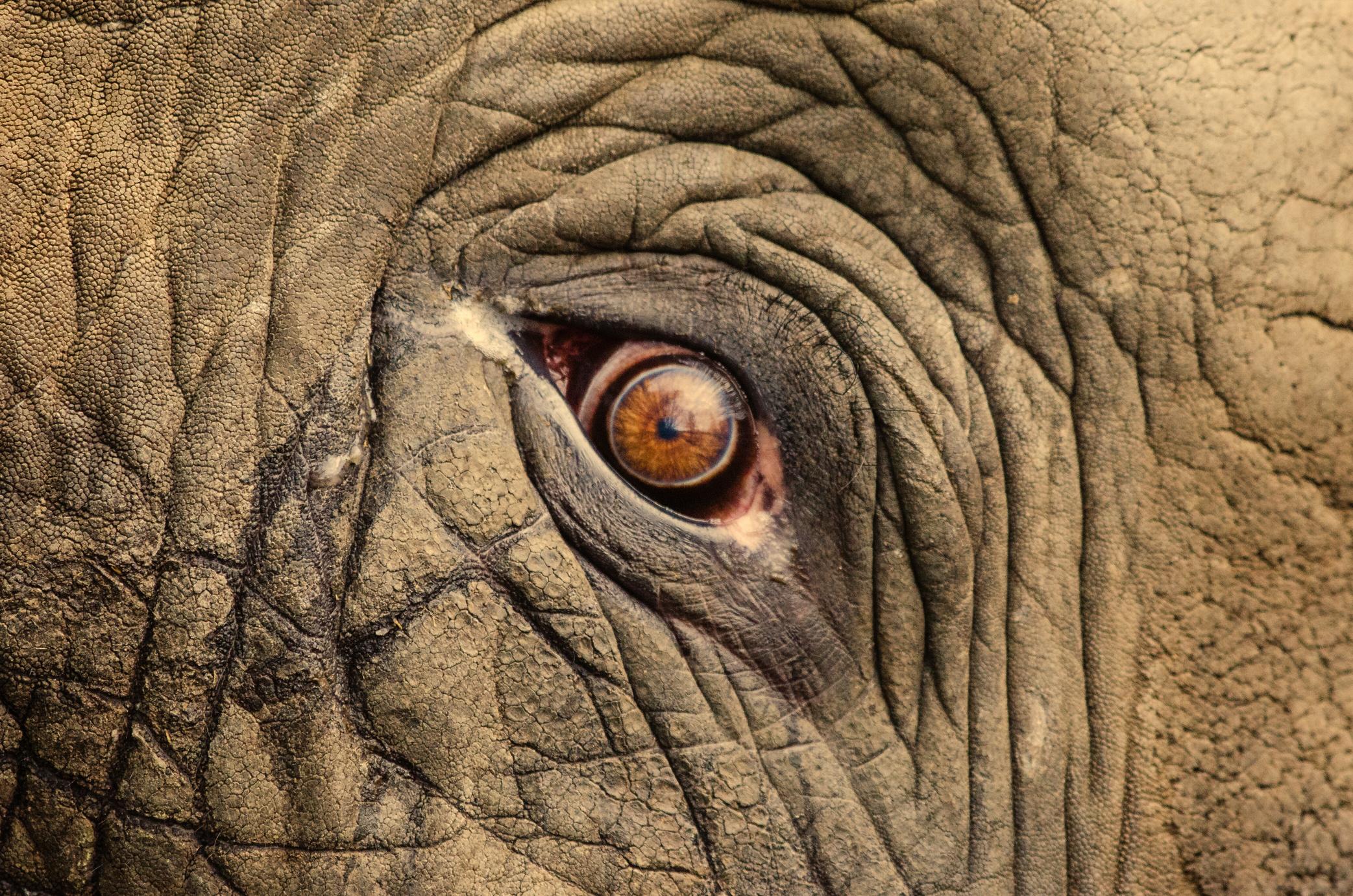

Organizer's Note
The 2023 Conference on Communication and the Environment call asked us to consider the relationship between voice and the “ many injustices of the past and present” as we endeavor to narrate “just and sustainable futures” The authors of these vision statements explore strategies for engaging nonhuman voices, specifically animal voices, in these narrative constructions and encounters. Drawing upon their expertise in environmental studies, communication, rhetoric, and critical animal studies, participants discuss several forms of past and present violence against animals that must not continue into the future if we are to create the "just and sustainable futures" we envision
In the introduction to Voice and Environmental Communication, Peeples and Depoe (2014) express the concern that important voices are going unheard in matters of critical environmental importance Nowhere is the “unheard voice” more prominent than in our disciplinary and societal rejection of animal voices. To the extent that communication is considered an internatural endeavor, it is so at the fringes of the field. Most environmental communication scholarship is not attuned to the manner in which the more-than-human world communicates, but rather how we humans use symbols to articulate environmental understandings, secure adherence to policies
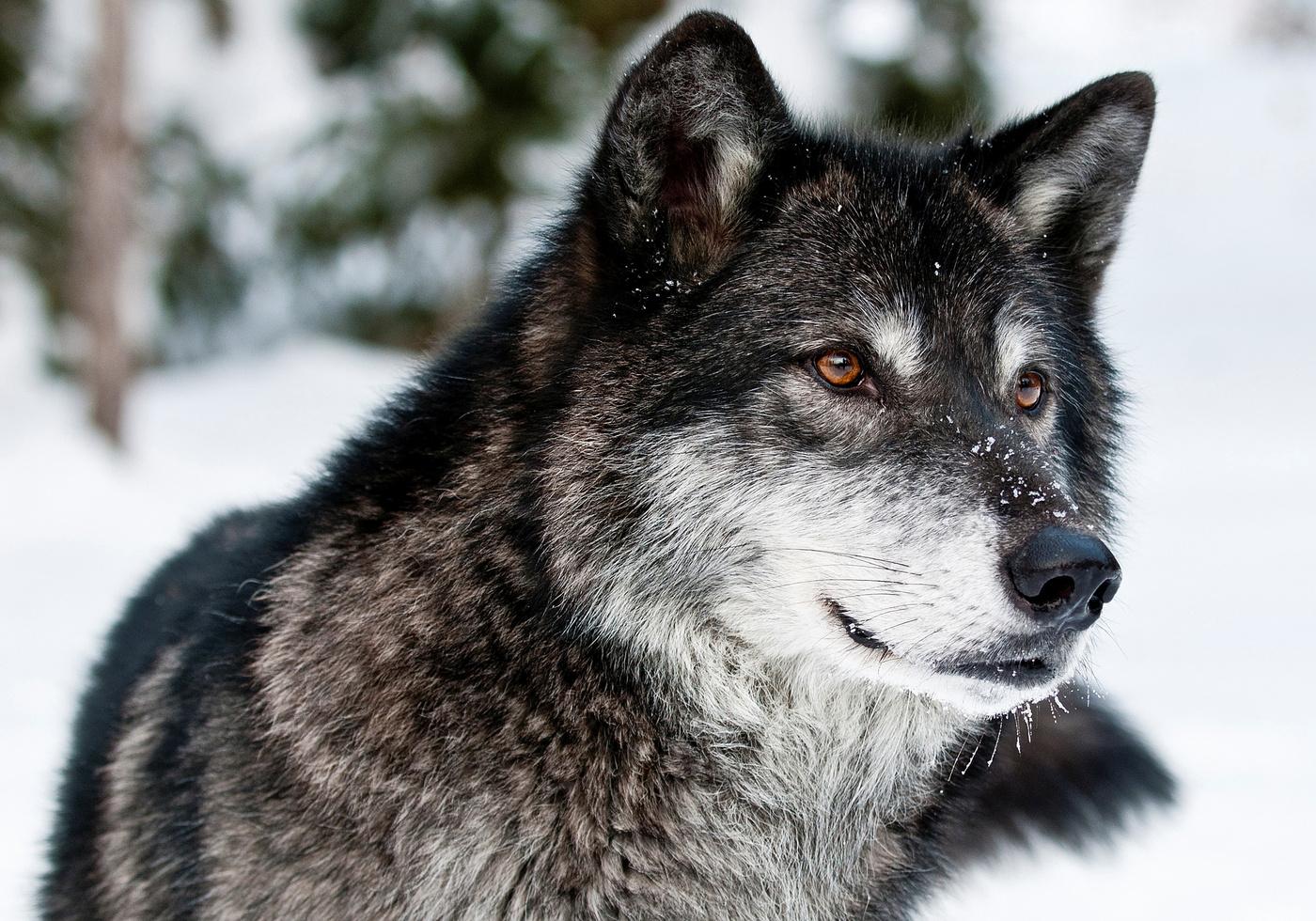

or perspectives, and build communities of commitment to environmental causes The roundtable participants reinforce but also seek to expand the conversation, fomenting future scholarship, teaching and activism aimed at centering animal voices, animal experiences, and animal ethics in environmental decision-making.
After more than a decade of sustained scholarship, and thirty years since George Kennedy’s provocation that rhetoric might be understood, in animal terms, as the exchange of intentional energy, we are arriving at the productive intersection of ethology and communication studies. The idea that “all things speak” (as Percy Bysse Shelley put it in “Queen Mab”) is still finding its foothold in the fields of communication but some progress has been gained In addition to a number of journal articles dating back to the 1990s, books such as Doyle’s Mediating Climate Change, Plec’s Perspectives on HumanAnimal Communication, Parrish’s Adaptive Rhetoric and The Sensory Modes of Animal Rhetoric, Freeman’s The Human Animal Earthling Identity, Merskin’s Seeing Animals, and Muller’s Impersonating Animals have worked to expand spaces for animal voices and more-than-human interests. These authors are joined by other critical cultural scholars and educator activists working to address the ways in which violence toward animals is implicated in climate change Collectively, we share the conviction that only by engaging with and seeking to understand animal voices can we narrate the just, sustainable, and humane future we seek.
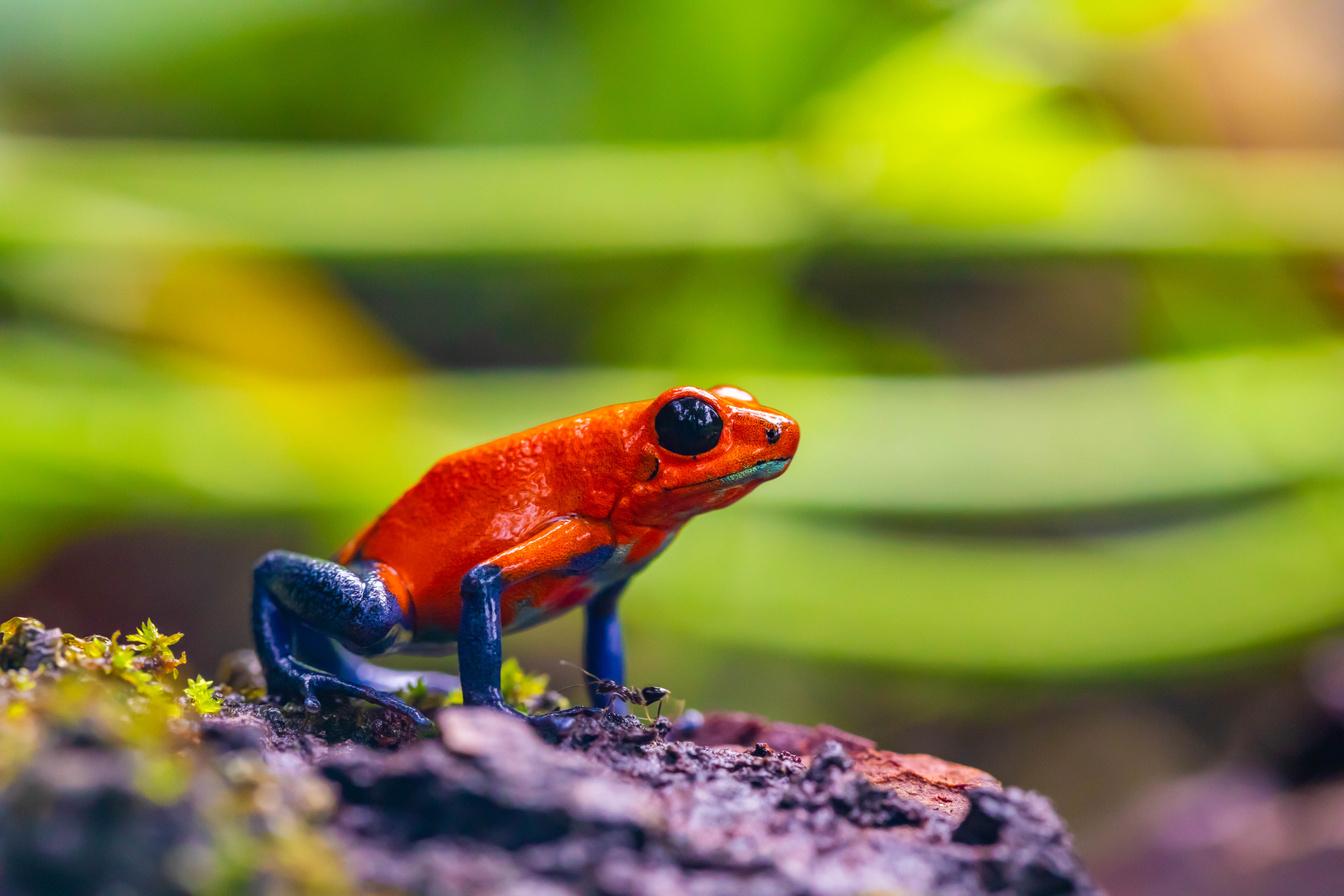 IN SOLIDARITY, CARRIE PACKWOOD FREEMAN AND EMILY PLEC
IN SOLIDARITY, CARRIE PACKWOOD FREEMAN AND EMILY PLEC
For social change advocates to know how to authentically inspire, They must first identify to what we should ideally aspire.
Table of Contents
Organizer's Note
Roundtable Participants
Developing Sensorial Training
Animal Voices, Animal Law
Coyotes in the Crosshairs
Information can Build a Protective Fence around Animals

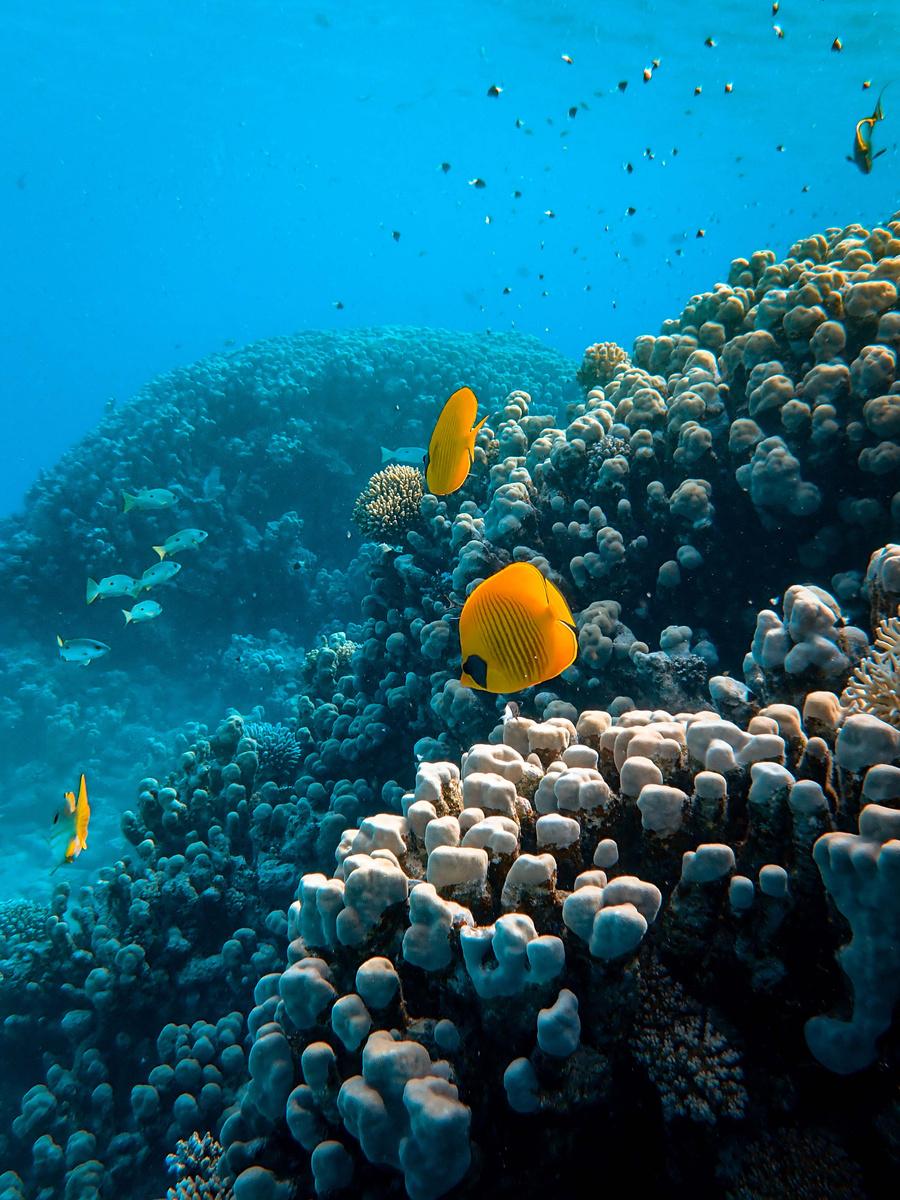
Education for Transformation and Commitment to Animals
A Case for Anthropomorphism

Moving from the Not to the How: Education and Communication on Collaborative FuturesMaking
Future Statement on a Just and Sustainable Animal-Centric Future
Intersectional Organizing, Animal Rights, and the Future of Environmental Justice
Positive Animal-Centric Future Created by Human Animal Earthlings
Gen Z Future Statement
Roundtable Participants
CARRIE PACKWOOD FREEMAN, PROFESSOR, GEORGIA STATE UNIVERSITY
EMILY PLEC, PROFESSOR, WESTERN OREGON UNIVERSITY

ALEX PARRISH, ASSOCIATE PROFESSOR, JAMES MADISON UNIVERSITY
MAREK MULLER, ASSISTANT PROFESSOR, TEXAS STATE UNIVERSITY
DEB MERSKIN, PROFESSOR EMERIT, UNIVERSITY OF OREGON
NATHALIE “LEE” CROCKER, PROFESSOR AT LANDMARK COLLEGE
JO MARRAS TATE, PH.D. CANDIDATE, UNIVERSITY OF COLORADO BOULDER
JULIE DOYLE, PROFESSOR, UNIVERSITY OF BRIGHTON, UK
NORIE ROSS SINGER, PROFESSOR, SAGINAW VALLEY STATE UNIVERSITY
SILJE KRISTIANSEN, ASSOCIATE PROFESSOR AT THE UNIVERSITY OF BERGEN
Developing Sensorial Training
By Alex ParrishAs I imagine people participating in this discussion are well-aware of specific examples of animal oppression already, I wanted to shift the focus from the what to the how. The how has almost universally been treated by academics as an act of intent, but there is a space yet to be explored outside of these hows. As I continue to refine my own thought about animal cruelty, I have come to the conclusion that we can work with those who care, and help them to effect positive change; we can reason or bargain with politicians, in order to force change where capitalist forces intercede; but we have yet to truly engage with one important frontier, which is the “how” of the suffering that humans cause, but in our arrogance, we do not even know we’re causing it
This might sound confusing, and it should – humans, like any other animal, did not evolve to attend to things they are unable to sense. It wouldn’t make any, well, sense to extend our concerns beyond our senses until we are able to do so via technology or through symbiotic relationships with other animals that have better, or different, senses than we do
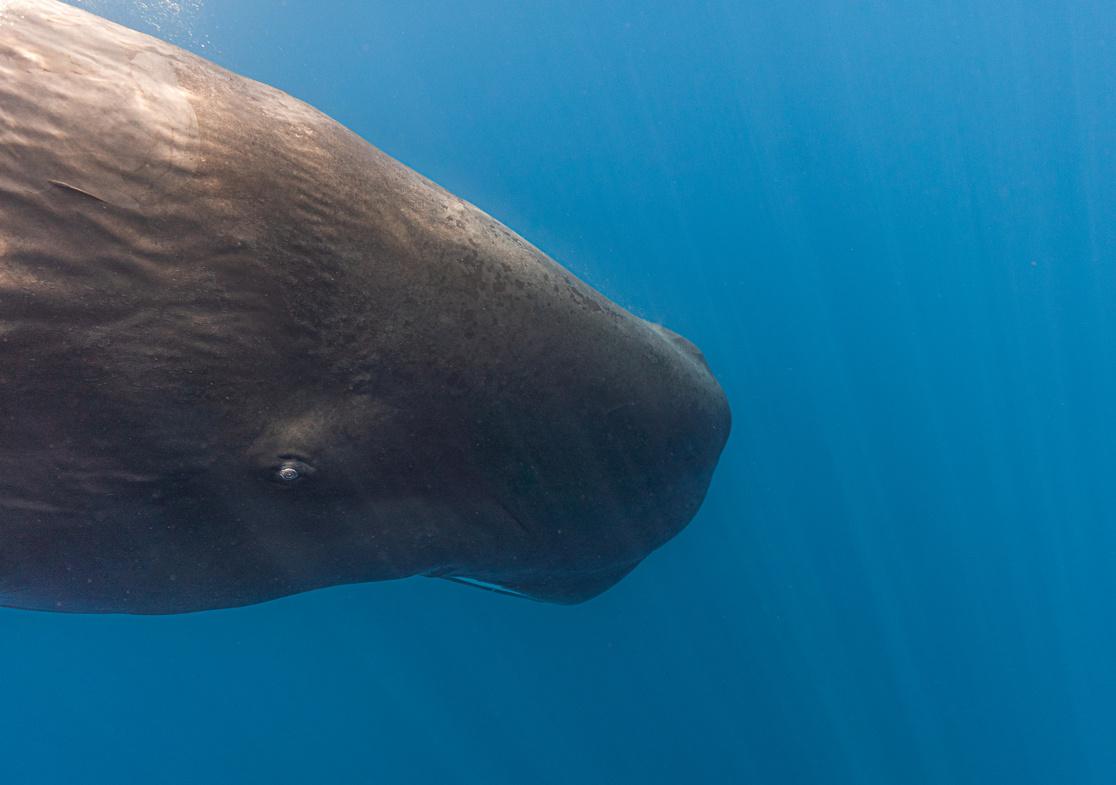

This is why the study of nonhuman animal communication has become so important to me We float in a dark realm called space, perched atop a tiny roundish rock surrounded by air. We sense some of those things that were most beneficial to our ancestors, as one would open a tinted window to let in light, heat, and sound. But we have very few windows available to ourselves, and frankly, those that we do have are somewhat creaky and poorly-maintained relative to other species We don’t see well, our hearing is poor, we barely smell anything, and to exercise our sense of touch, we have to be right on top of our subject There are other senses, but most of them are similarly weak – human bias runs through the audio-visual media in nearly all cases
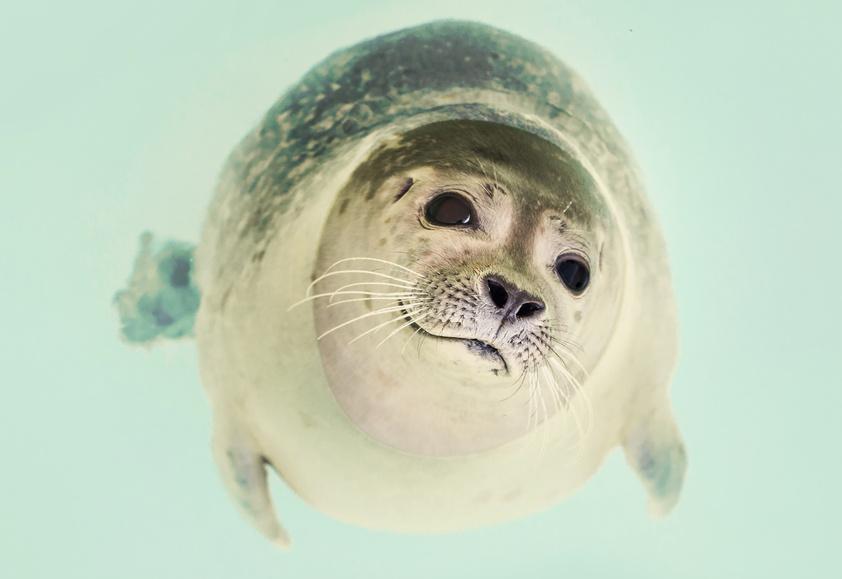
Our weakness as a species has never been our problem, because it led to cooperation, which is our strength. (Not our intelligence, by the way, which I have yet to be fully convinced is a good thing.) Human weakness isn’t our problem – it’s everyone else’s And here’s where some concrete examples might be useful We create massive amounts of noise, which can be annoying to us, sure, but it can be completely disruptive to the lives of aquatic mammals, especially cetaceans Shipping noises at sea, underwater explosions, and the like are often completely undetectable by the human ear, or are temporary nuisances at worst, but to species of whales and dolphins, who navigate primarily by sound, it can be deadly to have that primary sense disrupted – much like if your friend put her hands in front of your face while you were driving down the highway Similarly, light pollution can have devastating effects on a variety of species, including moths, frogs, and sea turtles. Human created artificial light can disrupt entire ecosystems, and cause night flying birds and other creatures to die at much higher rates than they would naturally
But these are senses we know What I have been concentrating my research on for the past few years is the disruptive information we broadcast to the world that we don’t even realize Whether nonhuman animals receive these signals via thermoception, electroreception, echolocation, or any number of other sense pathways we cannot process, but nonetheless flood with information, they are massively important if we want to move forward with an “animal-centric” future In our arrogance as humans, we simply ignore what we cannot sense, but to be truly humane, we need to assess the damage we are doing by ignoring what other animals do sense.
References and Suggested Readings:
"Light Pollution Effects on Wildlife and Ecosystems " 2010, accessed 05/21, 2023, https://www.darksky.org/lightpollution/wildlife/.
Parrish, Alex C. The Sensory Modes of Animal Rhetorics: A Hoot in the Light Palgrave Studies in Animals and Literature
New York: Palgrave Macmillan, 2021
https://link springer com/book/10 1007/978-3-030-76712-9
Weilgart, L S "The Impacts of Anthropogenic Ocean Noise on Cetaceans and Implications for Management." Canadian Journal of Zoology 85, no. 11 (2007): 1091-116.
https://doi.org/10.1139/z07-101.
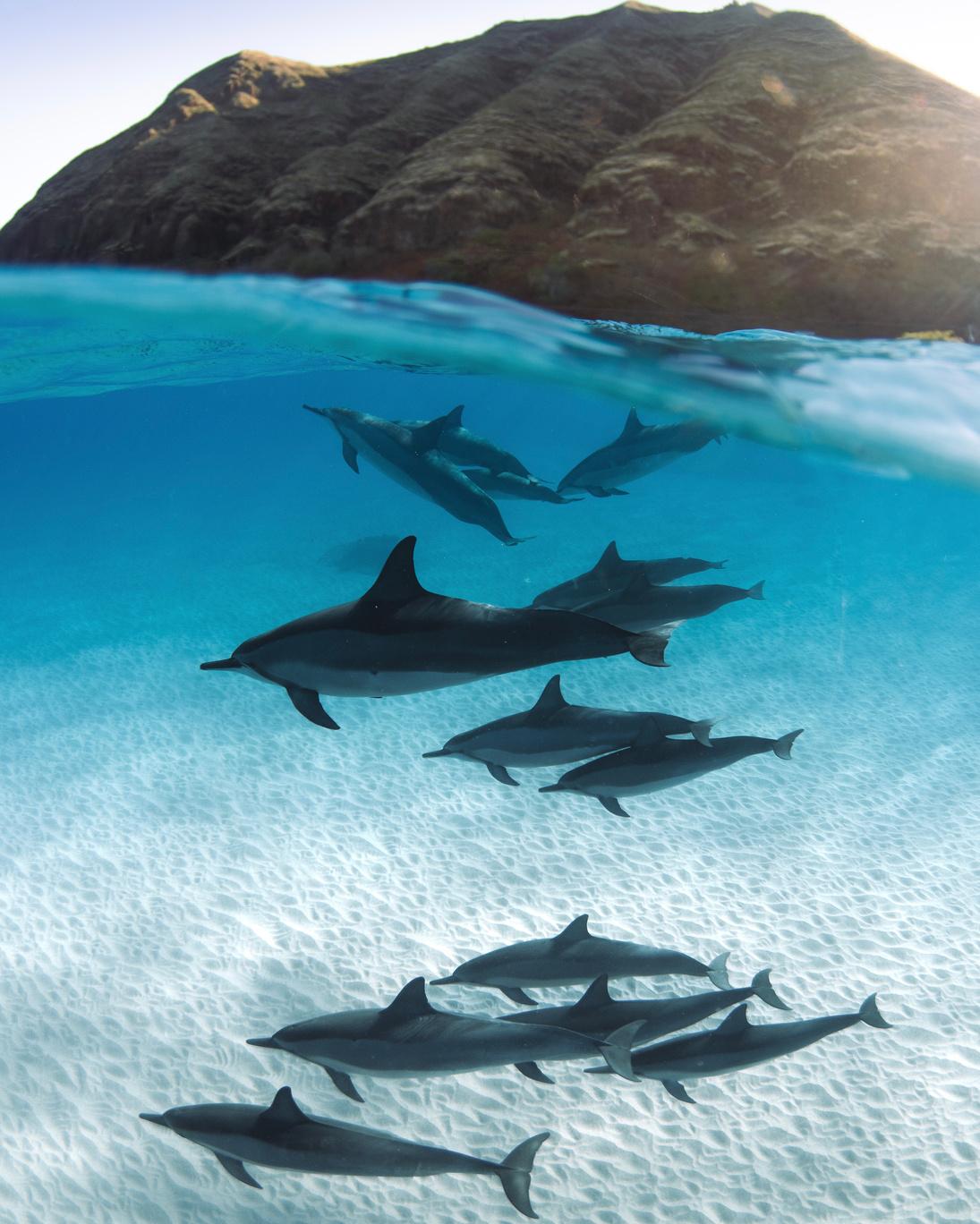
Animal Voices, Animal Law
 By S. Marek Muller
By S. Marek Muller
The purpose of our panel is, in the broadest sense, to theorize how best to incorporate nonhuman animal voices into environmental communication scholarship and praxis We posit that without a critical engagement with nonhuman animal subjects, environmental communication is rendered toothless (pun intended) Thus, we must engage with critical theories and practices of animal liberation, more colloquially termed “animal rights ” It is in the latter half of this term - rights - that I enter into this panel As an environmental rhetorician concerned with matters of animal law and policy, I posit that one reason incorporating nonhuman animal voices into our scholarship has proven difficult is because, under most Western conceptualizations of law, nonhuman animals are not legal subjects with voices under consideration
In my work, I have concerned myself with the concept of a “person” - not as a synonym for “human,” but rather as a key term in ethics and law To be a person is to be considered a member of a significant moral community, a community which then, through the designation of personhood, afford a being the status of “subject” as opposed to “object ” A subject not only has agency, but is entitled to certain rights and privileges not to be infringed upon by others Under the law, a legal person has legal standing Without personhood or standing, a being under assault is unlikely to see justice or have their voice heard in court This is, of course, a very shallow depiction of jurisprudential debates over personhood within and outside of animal law Personhood, however, is central to any serious discussion of animal voices being heard in (and beyond) the legal sphere
In Tilikum v SeaWorld, the animal rights group PETA sued the sea animal entertainment venue Sea World for keeping captive orcas They did so using the 14th Amendment of the U S Constitution as precedent, essentially claiming that their orca client Tilikum was being kept as a slave Despite its viral media coverage, the case went nowhere As a nonperson, Tilikum could not possibly be entitled to constitutional protections Thus, despite the mass outpouring of public disgust brought about by the documentary Blackfish, in which Tilikum and his fellow orcas’ voices are heard vocalizing distress over and over again, Sea World was under no legal obligation to free its captive performers
Take, additionally, the case of Naruto v Slater, wherein PETA sued photographer David Slater on behalf of Naruto the macaque Slater’s camera had been used by Naruto to take “selfies” which then went viral on social media PETA felt that Slater should not profit off of Naruto’s “art,” which they claimed was an agentic act by Naruto The case was, essentially, laughed out of court, as Naruto - being a nonperson - could not possibly hold copyright Slater, however, also could not hold copyright as he did not take the photo Legally, “no one” produced these communicative artifacts Without personhood, questions of animal communication through artwork and other forms of intellectual property are difficult to ponder
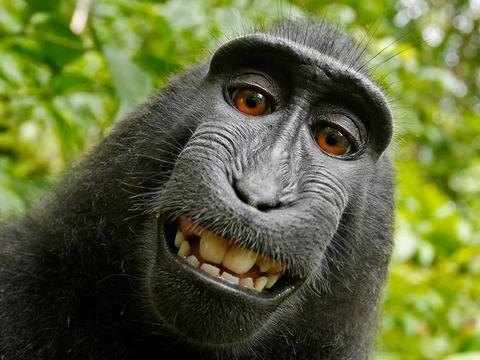
As we move forward, we must ponder how legal categorizations of who matters and how much constrain both theories and practical applications of nonhuman animal communication If an animal is an “object” but not a “subject,” then legally, their cries for help in cases of abuse are only significant insofar as they carry property value for someone else If they are a non-person, only the voices of persons affected in a case will be heard Centering animal voices necessitates centering the axiological foundations of animal law and policy
Suggested Readings:
Deckha, M. (2021). Animals as legal beings: Contesting anthropocentric legal orders. University of Toronto Press.
Francione, G (2012) Animals property & the law Temple University Press
Muller, S M (2020) Impersonating animals: Rhetoric, ecofeminism, and animal rights law MSU Press
Wise, S. M. (2014). Rattling the cage: Toward legal rights for animals. Hachette+ ORM
David Slater via Wikimedia CommonsCoyotes in the Crosshairs
By Deb MerskinIn Oregon and many other U S states (43 in fact), wildlife killing contests are legal. Only seven have banned them. So-called derbies are organized on private, state, and federal lands with the goal of killing as many members of a particular species (such as badgers, skunks, prairie dogs, rabbits, bobcats, sometimes wolves, and most commonly, coyotes), within a designated time, usually a weekend. Prizes are awarded for the greatest number killed, the largest and sometimes the smallest
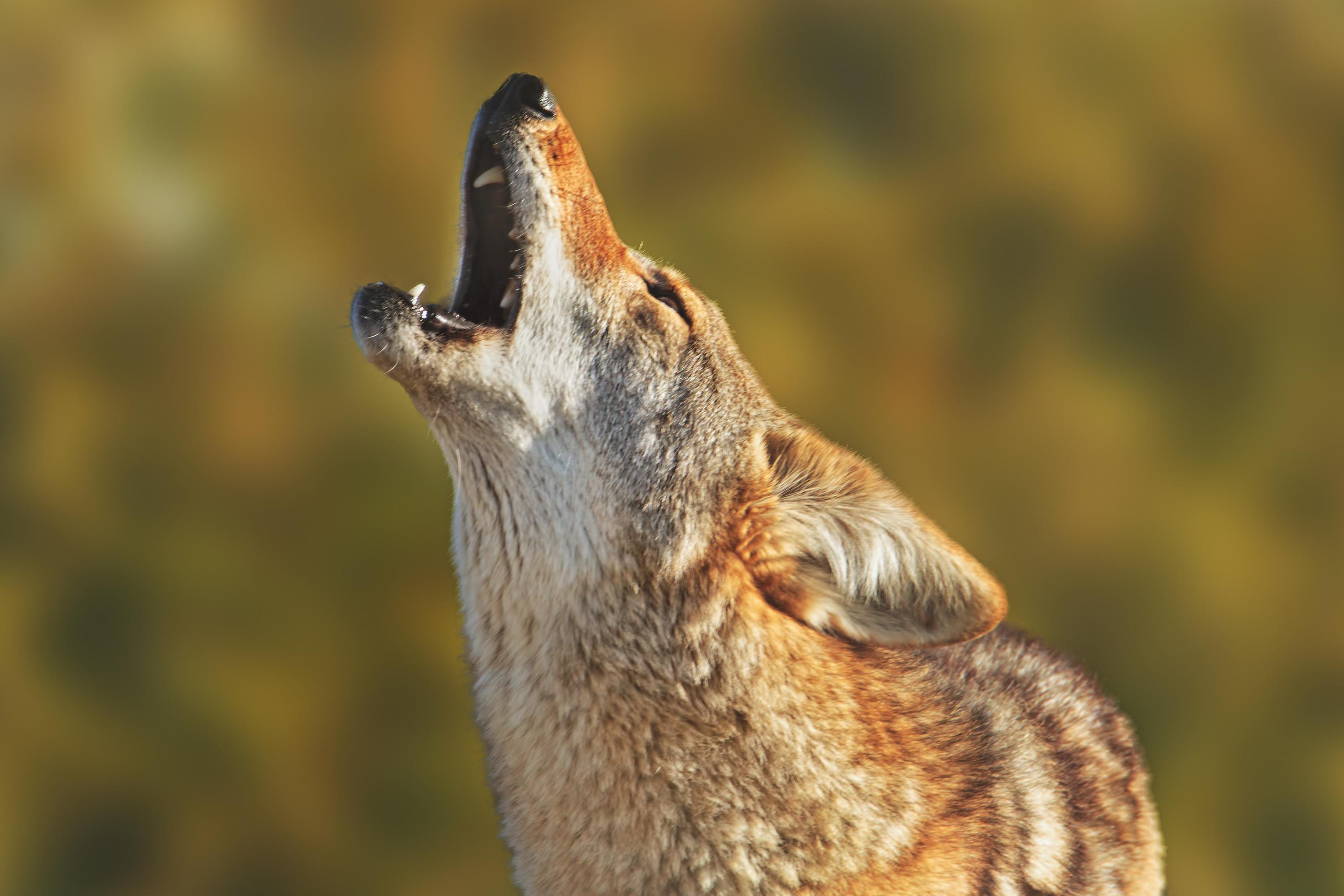
Defenders claim derbies lower the population of species to protect anthro interests such as growing sheep and cattle They also claim it is bonding opportunity, particularly for families What I have focused on for the last several years in scholarship and advocacy is to end coyote killing contests What’s interesting about efforts to ban the contests is defenders react as if the legislation would end killing coyotes altogether Yet coyotes can be killed without tags, permits, any time of year for whatever reason However, it is ending the contests, the mass piling of bodies, that animal advocates, including some ranchers, support
Conflict over the killing contests mirrors current political tensions such as urban versus rural, threats to individual rights, particularly to own weapons, anti-science views, and individualism versus collective good While emotions run high on the many sides of the issue ironically one of the appeals that has gained most traction throughout the efforts to legislate out the contests is from hunters. At a recent hearing of a state agricultural committee a couple members were most convinced by their sense that these contests, in which coyotes are lured in by distress calls of, for example, pups in distress or prey noises, that ethical hunters would not do this
My hope for a positive/humane-animal-centric future would be to leave coyotes alone Science does not support mass killings as productive “pest control ” Coyotes respond by having more frequent and larger litters when stressed, and family dynamics are disrupted. I’d like to see incentives paid to farmers and ranchers for not engaging in these efforts In Oregon today there is activity to pay farmers and ranchers to voluntarily not graze their cattle on Bureau of Land Management land because of the devastation to the landscape and the endangerment of wildlife who rely on this ecosystem Perhaps, given that one of the arguments for the contests is that they bring money into poor rural areas by way of contestants staying in these towns, a solution is to provide other financial opportunities. In study of the testimony of pro- and anti-contest individuals I found a few compelling letters not only from “ethical” hunters but also long term, multigenerational ranchers and farmers who said their livestock animals are their responsibility and if they lose one to coyotes, foxes, or eagles, it is not the fault of the wildlife It is their fault for not caring for their animals
In my vision of the future of course, no animal would suffer for being who they are. They would not suffer in the crosshairs of political agendas that say to stop killing would mean a loss of gun rights We all know where gun rights have gotten us Rather, part of my vision of coexistence and flourishing is creating nonviolent activities for rural parents and children to do together, individual attention to the well-being of all animals kept on ranches, and economic incentives to bring tourists to these areas to appreciate rather than destroy nature
Suggested Readings and Resources:
Flores, D. (2016). Coyote America: A natural and supernatural history. New York: Basic Books.
Merskin, D. (2022). Coyote killing contests: Persistence of differences among Oregonians Journalism & Media, 3(2), 292308 https://www mdpi com/2673-5172/3/2/22
Hawes-Davis, D (Dir ) (2001) Killing coyote High Plains Films http://www highplainsfilms org/films/killing coyote/filmcredits/ Project Coyote. https://projectcoyote.org/ Wildlife killing contests. Humane Society of the United States:https://www humanesociety org/wildlifekillingcont ests

Information can Build a Protective Fence around Animals
By Silje KristiansenI have helped send more chickens to slaughter than you and everyone you know could ever manage to eat in your combined lifetimes I grew up helping, and earning my first ever salary, at my father’s industrial chicken meat farm I have been taught to identify too small, too slow growing, injured, sick, and weak chickens and bring them back to my father so that he could cull them. Those make no profit I have helped pack hundreds of thousands of chickens in plastic crates and see them drive off to the slaughterhouse During the night, chickens get packed for slaughter at night and in the darkness because that is when they are calmest
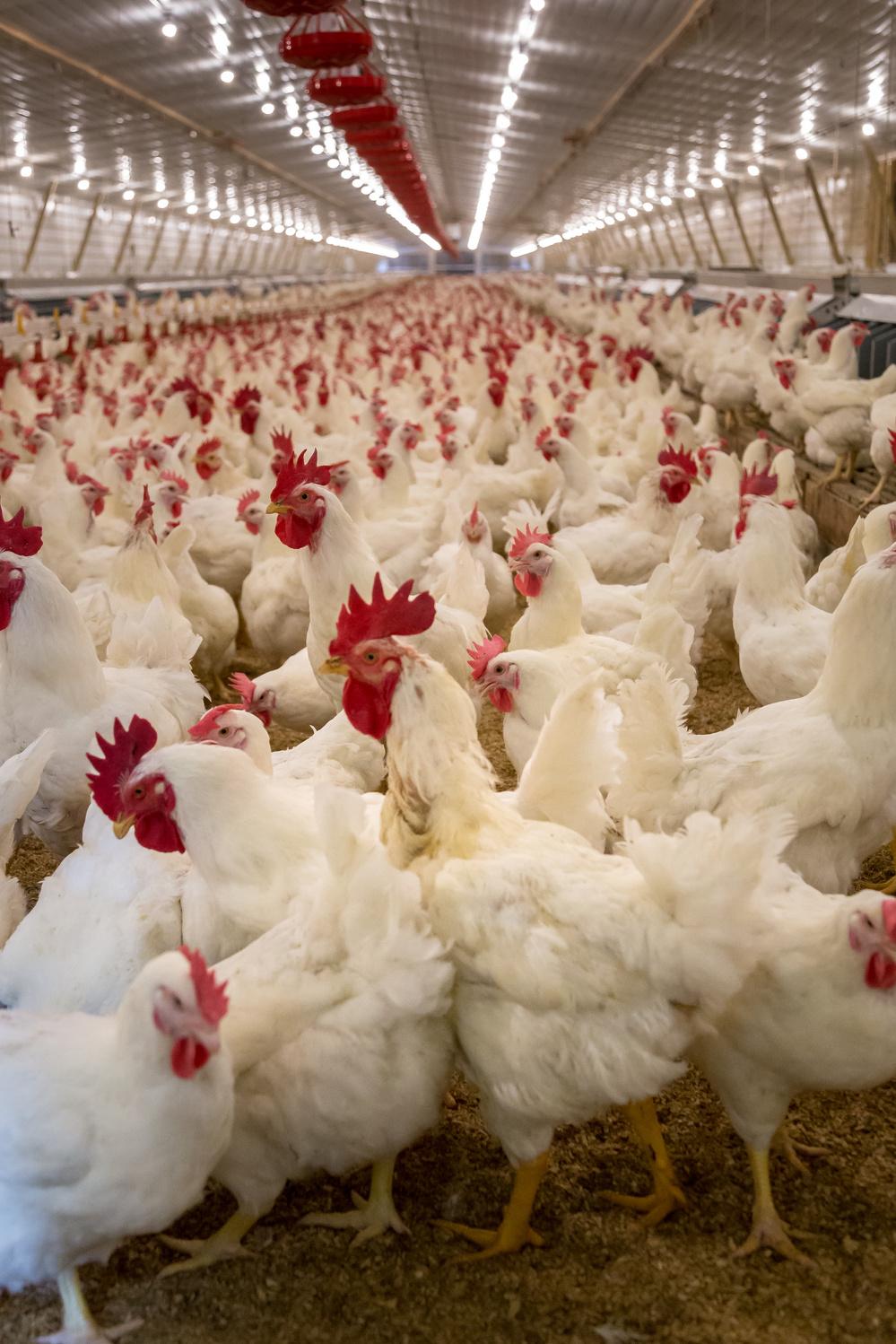
At 35-ish I read a newspaper article in the Swiss newspaper Tages-Anzeiger that interviewed slaughterhouse workers. I realized that each pig slaughtered in that slaughterhouse gets less than a minute attention in order for him or her to be killed. After that I allowed the floodgates of online information to open and swell over me Almost drowning in new information, I came up to breathe to find out how I would put together a nutritionally sound vegan diet I was never going to pay for animals to suffer again
It took one newspaper article to change my diet, my perception, my opinion, and in some ways my life trajectory. One journalistic text triggered me to move as far away as possible from the way I earned enough money to buy my first cell phone
We know from the knowledge deficit model that most people do not change their ways after learning new information But knowledge comes from somewhere Even the few hundred words printed by a single journalist on one of the several pages of a daily newspaper can change the destiny for human and non-human animals.
If only more people knew… But people know, and some choose not to know. To help animal beings be exposed to less suffering, the transfer of information is key Words are the prerequisite for creating more positive animal-centric experiences
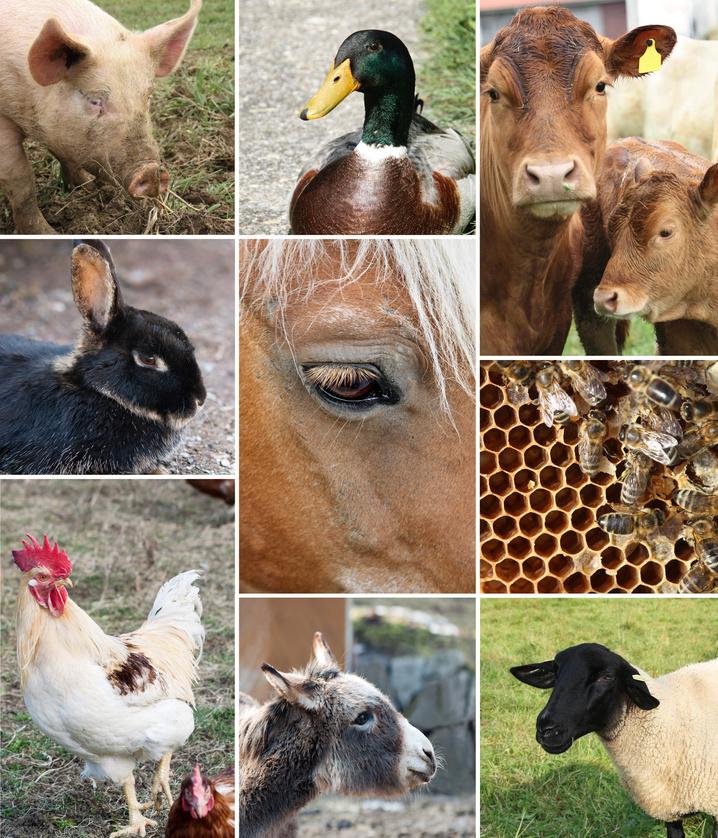
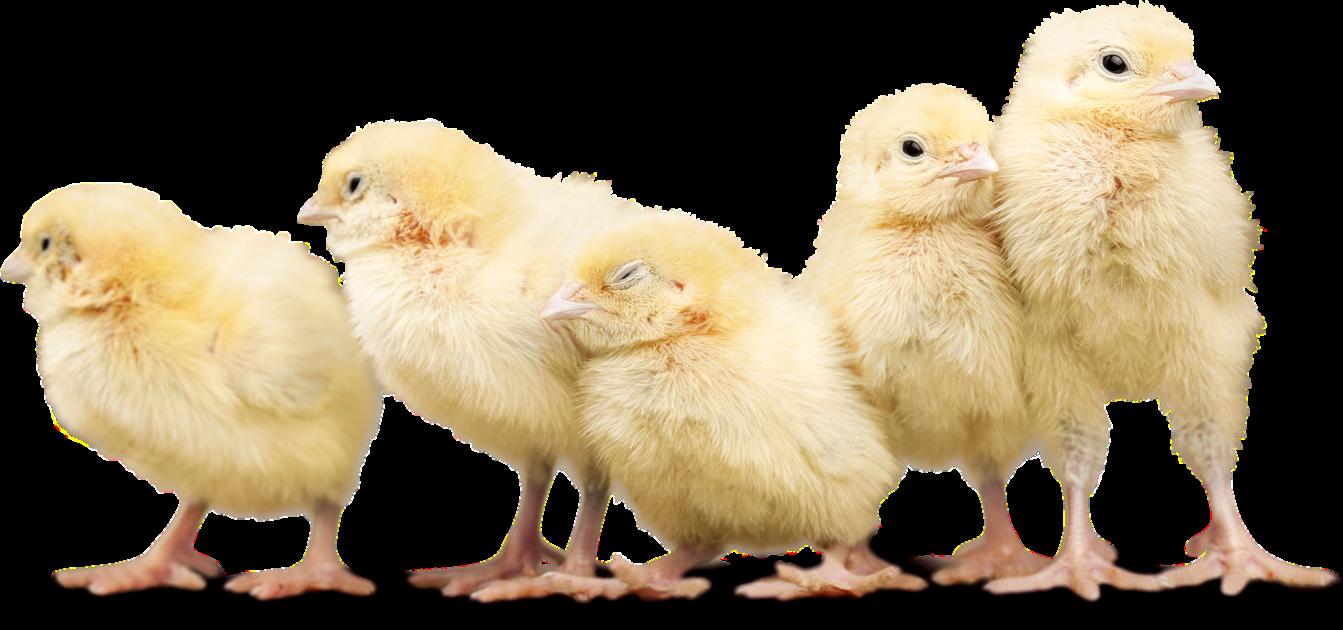
I envision a future for animals, human and non-human, where information has built a fence around all animals to protect them from unnecessary suffering.
Suggested Viewings:
Film: Peaceable Kingdom the journey home
Film: The Game Changers
Education for Transformation and a Commitment to Animals
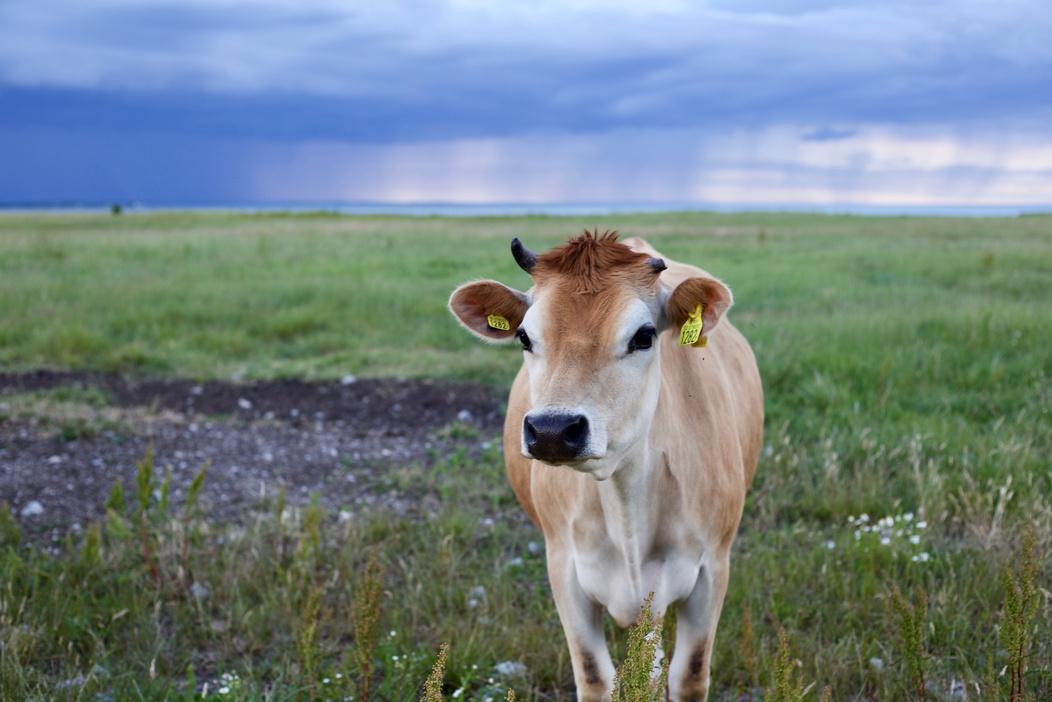 By Lee Crocker
By Lee Crocker
In 2013, around the northern edges of the Okavango Delta in Botswana, subsistence farmers poisoned free-ranging lions that were killing their bovines raised for meat 50% of the area’s lion population was killed that year Lion conservationists who published the study, Lions at the Gates: Trans-disciplinary Design of an Early Warning System to Improve Human-Lion Coexistence, developed a multi-pronged study to work with villagers to help them begin to care about the lions and to stop poisonings
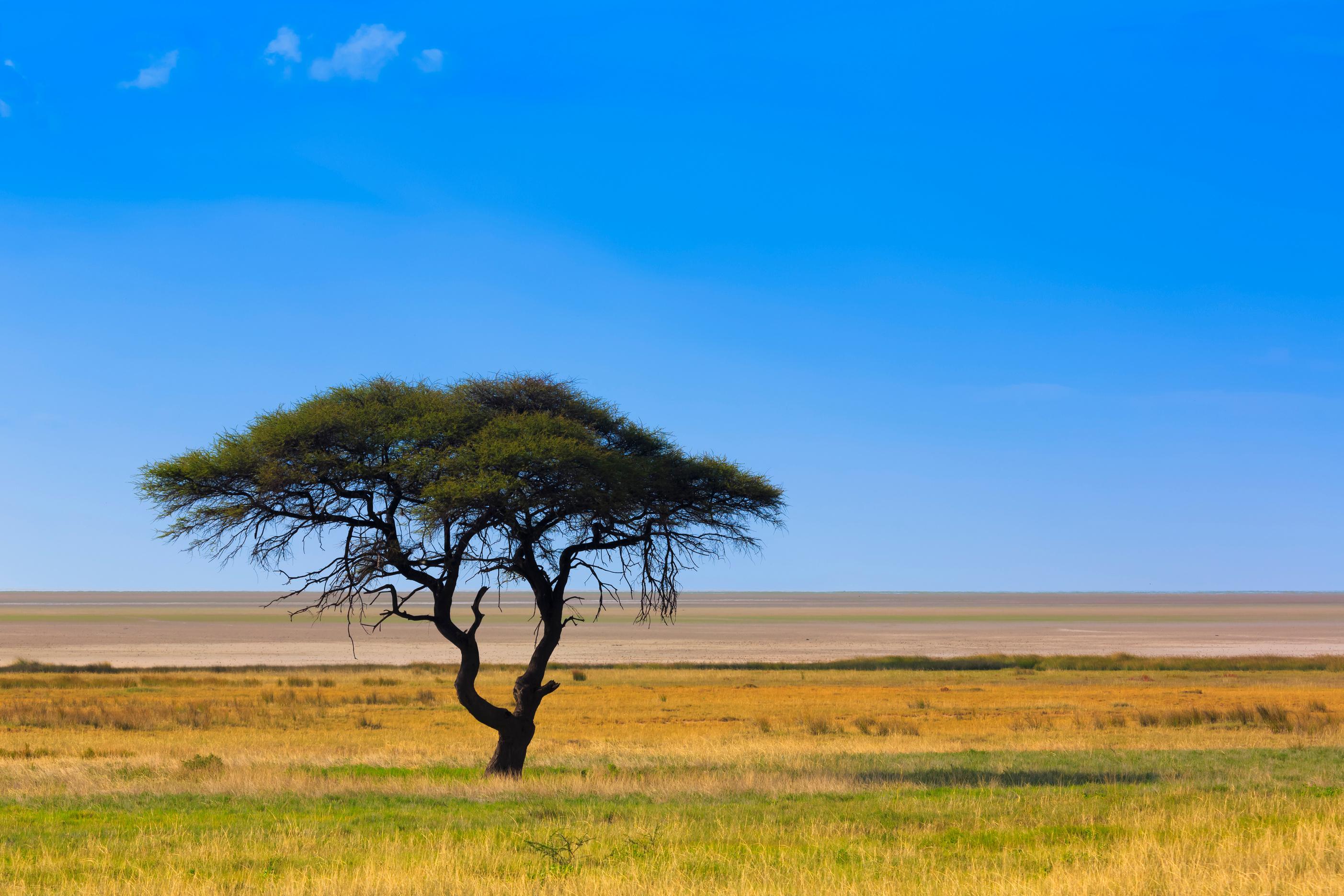
Researchers fitted the lions with GPS collars, showed farmers how to create simple, affordable lion proof fences, and asked locals to name each collared lion in their own language Using the collars to keep track of lion movements, and the farmers’ ubiquitous cell phones, researchers developed an early warning system, so that farmers could be warned and move their bovines to safety This program showed a 50% decrease in lion killings Locals reported a 91% level of satisfaction with the program preferring it to previous interventions, which paid for lost bovines
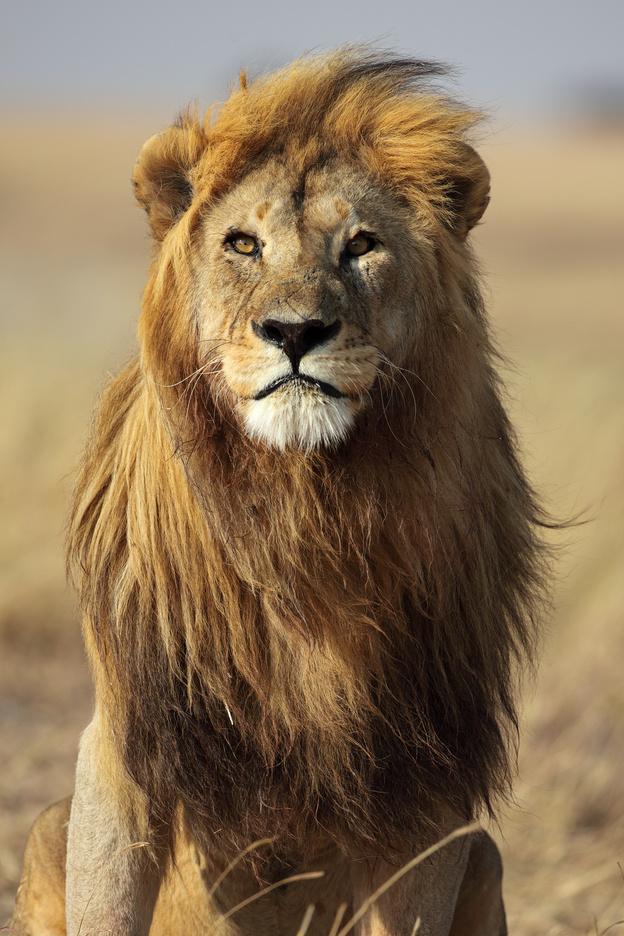
Raising awareness and increasing positive communication and relationships between humananimals and non-human animals requires education
People with worldviews that are anthropocentric have difficulty understanding the mission of the IECA If we introduce our students to internatural communication and environmental communication in our first- and second-year survey courses and in our upper level, focused courses, we will continue to bring people together in the mission of the IECA
The term “internatural communication” was first coined by Emily Plec. This term serves to describe the relationships and communication that exists between humananimals and nature. I have developed a course titled Internatural Communication where we analyze the relationships between human-animals and nature. We study what society believes about the environment, and we explore how the economy shapes views of nature. We outline how nature is a culture that has been marginalized by anthropocentrism.
Internatural Communication widens the discourse, including but not limited to:
The environment, Media and nature, Wild non-human animals, Companion and farm animals, Service and draft animals, Plant-life, Indigenous ways of knowledge, Nature therapy movements Vegetarianism

In my Internatural Communication course, we discuss anthropocentrism, biocentrism, and ecocentrism. The course exposes students to research showing that trees communicate with chemical signals and therapy dogs can help children to read aloud more fluently. Students in Internatural Communication are shown the wide array of possible topics through case studies, such as a tour of a humane sustainable farm and a field trip to a beaver pond to be introduced to a wild beaver named Dew. Andrew Stein, one of the lion study’s authors has been a guest speaker for the class.
Of the 102 students who have taken the class so far, each one has chosen to do research that is in harmony with the mission of the IECA They have gone forward in their lives understanding biocentrism versus anthropocentrism The study of internatural communication is one vehicle to help us work together increasing the numbers of graduates who appreciate the mission of the IECA
References and Suggested Readings:
Florian J Weise, Helmut Hauptmeier, Ken J Stratford, Matthew W Hayward, Konstantin Aal, Marcus Heuer, Mathata Tomeletso, Volker Wulf, Michael J Somers, & Andrew B Stein (Jan 25, 2019) Lions at the Gates: Trans-disciplinary Design of an Early Warning System to Improve Human-Lion Coexistence Frontiers in Ecology and Evolution, Vol 6 https://www.frontiersin.org/articles/10.3389/fevo.2018.00242/full
Plec, E. Plec, E. (2015, May 21). Perspectives on human-animal communication: Internatural communication. Routledge & CRC Press. https://www.routledge.com/Perspectives-on-Human-Animal-Communication-InternaturalCommunication/Plec/p/book/9781138921870
Stein, A (2014) Pride in Our Prides CLAWS Conservancy (clawsconservancy org)
A Case
By JoanneNonhuman animals’ emotions are a contentious topic Specifically, within Western scientific circles that focus on empirical evidence that relies on observation and experimentation, animals’ emotions are often avoided because of the “issue” of anthropomorphism But what is anthropomorphism, and why has it become an impediment in our observations of the more-than-human world? Who benefits from the concept of anthropomorphism? As we think about an animal-centric future, we must acknowledge and talk about nonhuman emotions and how similar we are.
In an effort to share how we feel, we have named our emotions But we cannot know if how we feel is exactly the same as another human does Often, we have a human’s words as explanations that they are feeling a certain way (even though we may think otherwise) We also use other sensory experiences to infer how other humans feel: facial expressions, movements in space, and even smell, for example We also use these sensorial experiences to understand nonhumans, and we explain our observations by comparing them to what we know: how we feel.
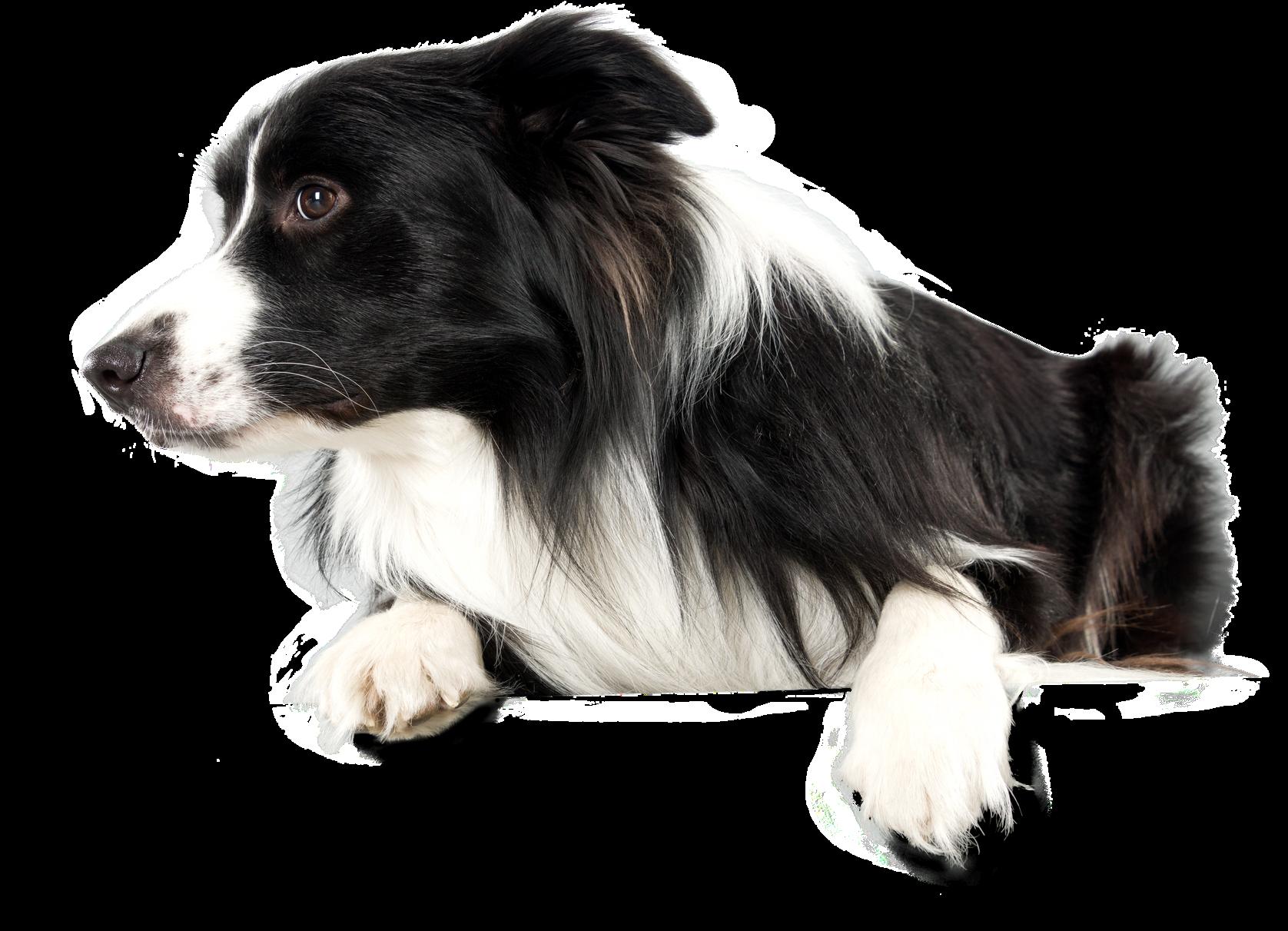
In Indigenous epistemes, we see a myriad of ways in which nonhuman emotions are interpreted and acknowledged In Western/ized settings, however, we regularly see a lack of acknowledgment and an insistence on calling our observations anthropomorphizing Anthropomorphizing is characterized as attributing human characteristics or behavior to nonhumans often a reason to invalidate research findings Dr Jane Goodall, the famous primatologist, provides an example In her encounter with chimpanzees at Gombe Stream National Park, in Tanzania, the journalist Virginia Morell observed two chimpanzees interact with Goodall: Dilly and Beethoven After watching what Morell could only describe as a “lie” and “deceitful[ness],” she asked the following:
Why not acknowledge the congruencies we have with nonhuman animals? Charles Darwin wrote about our shared emotions in The Expressions and Emotions in Man and Animals (1872) Darwin discussed that emotions needed to have evolved in nonhuman and human animals for the purpose of our social lives For Darwin, there is an evolutionary continuum in which emotions have evolved to fulfill the needs of each animal’s lifeworlds, or umwelt, as Jakob von Uexküll would put it The case for evolutionary continuity tells us that what we feel can be shared across species lines
“Are you going to write that up for a science journal?”
“I can’t,” Goodall replied.
“But why not?” I asked. Dilly’s actions had been so clearly deceptive; she had even connived with Goodall to fool Beethoven. How else could one explain that sequence of events?
Goodall said calmly, “No Other scientists will say this is only an anecdote and that there is no way to know what Dilly was thinking If I write it up, everyone will say, ‘Oh, Jane, how silly of you That’s anthropomorphizing’”
(Morrell, 2013, p 7)
Animal emotions are not spoken about as much as they should since there is a Western utilitarian lens that constrains us Once we see and talk about animals having emotions (often anthropomorphizing them), it will bring down institutions and organizations that have economically benefited from the perception of nonhuman animals lacking emotions Our future needs to be shared with other species, and our future also needs to be where we all know we share how we feel
Suggested Readings:
Do Fish Feel Pain? Victoria Braithwaite
The Emotional Lives of Animals, Mark Bekoff
Animal Wise: The Thoughts and Emotions of our Fellow Creatures, Virginia Morell
Animals, Anthropomorphism and Mediated Encounters, Claire Parkinson
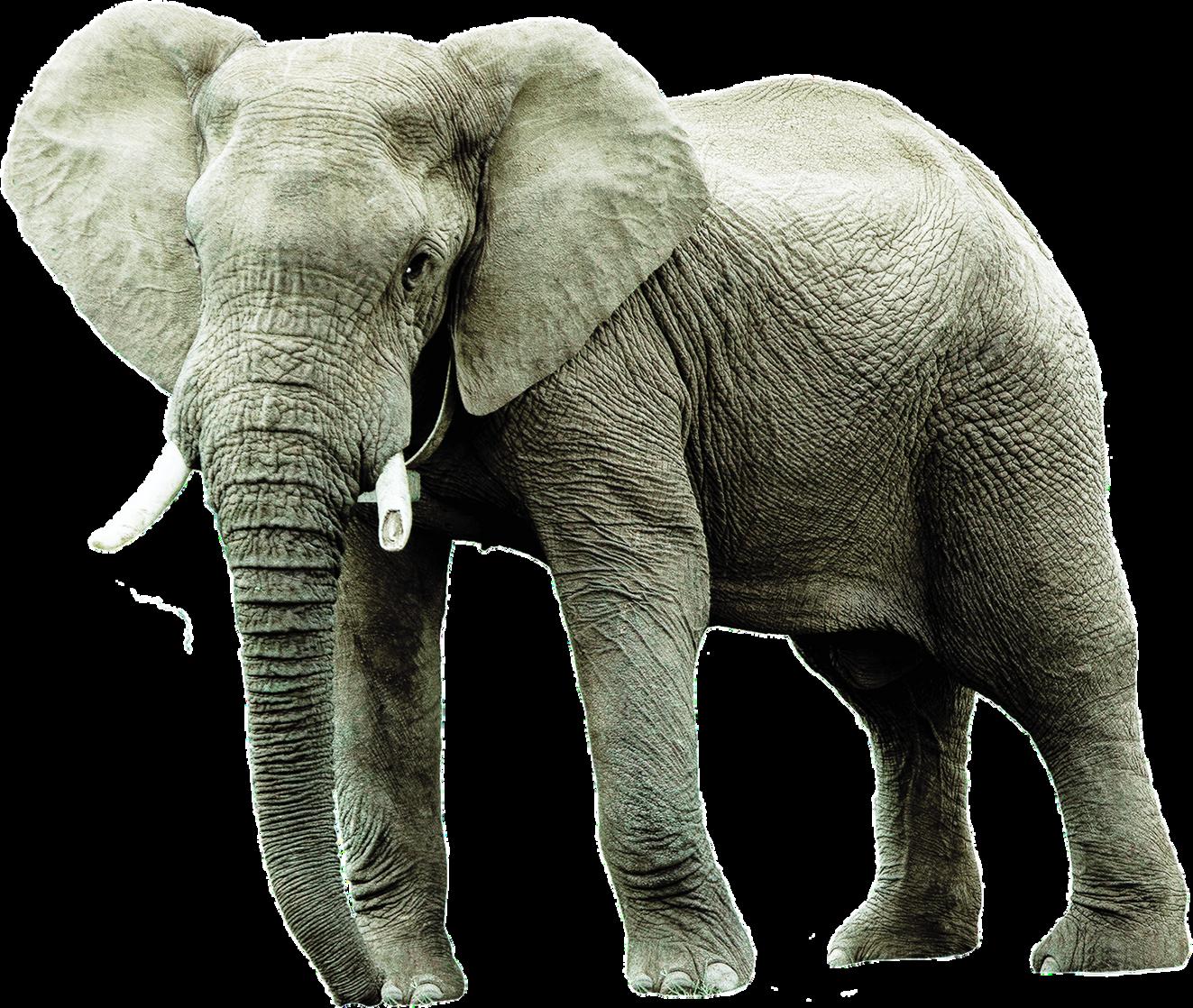
Moving from the Not to the How: Education and Communication on Collaborative Futures-Making
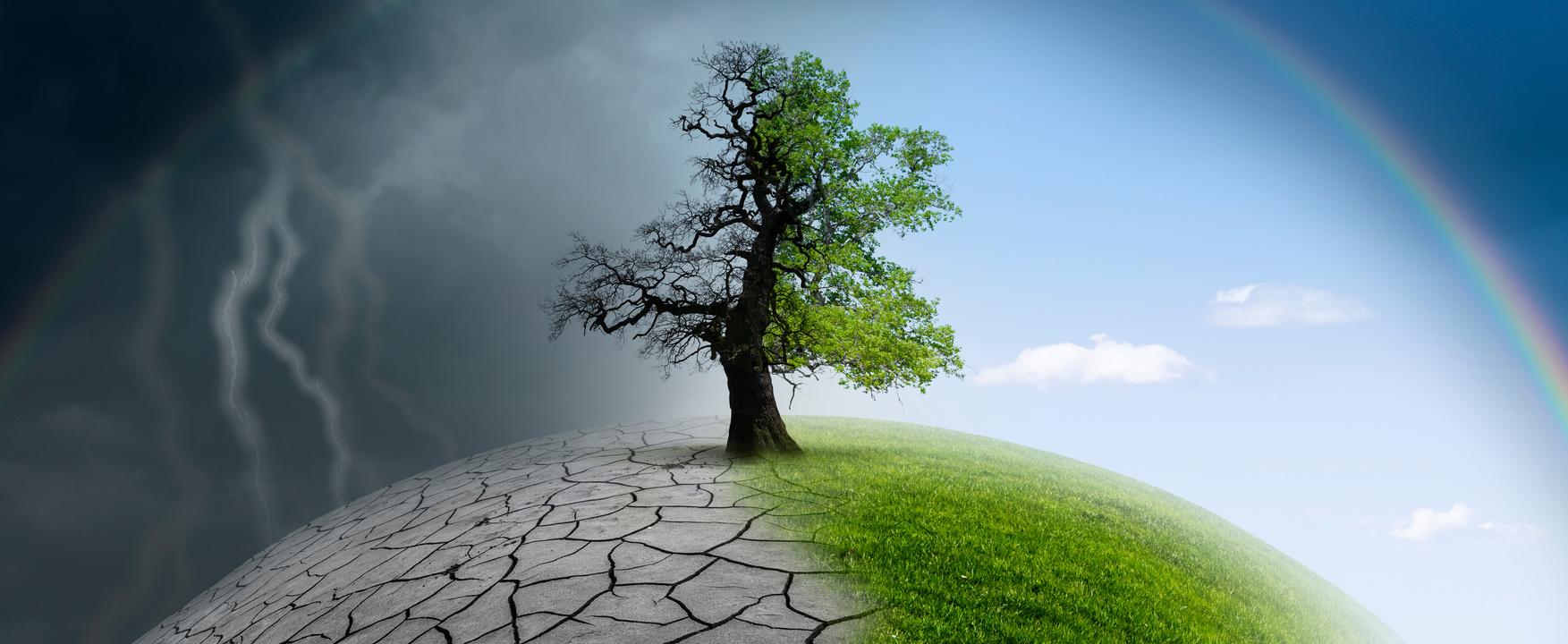 By Julie Doyle
By Julie Doyle
I situate myself as a queer ‘racialised white’ (Loach 2023) feminist vegan cisgender* woman from the global north Becoming vegan over 30 years ago was my entry point into animal ethics; the ‘lightbulb’ moment occuring after watching a British TV documentary on the dairy industry that laid bare the industrial and cultural processes involved in the mass normalisation of drinking another species milk intended for its own offspring What followed over the next few years were a series of personal revelations about the social constructions of my gender, sexual, raced and classed identity The ethical issue of eating meat and dairy communicated by a media documentary, thus led to an understanding of how the ideological framework of western human-animal relations related to other structural inequalities, and ultimately their historical and conceptual links to the climate crisis
I narrate this personal history because it underpins my concern for an interconnected move towards futures that situate multispecies and environments in equitable and ethical relationships with each other As Aph Ko says, ‘In our movements, we have been organising and theorising around literal, physical bodies of the oppressed, rather than going to the root of these oppressions conceptually’ (Ko & Ko 2017, 89). I also confess that as a critical media and communication scholar I have found it much easier to identify conceptual and communication issues of the climate crisis than shift my thinking to the imaginative reworking of futures required. This difficulty is related, I am sure, to my training in western environmental activism that focused on the what not to do rather than the how to do it differently and systemically; a formative education system that didn’t give me the tools for collaborative thinking and creative imagining; and a media culture whose stories and narratives fail to communicate and explore pathways for such futures
Recognising my shortcomings, I have sought to bring my critical work into conversation and collaboration with artists, educators, young people and other scholars to co-create climate communications in more collective and wholistic ways Situating animals within these narratives capitalises upon linking veganism to the climate crisis (a burgeoning relationship I originally explored in Mediating Climate Change, 2011), whilst maintaining an ethical approach to animal species and their relationship to other structural inequalities. Understanding animals as part of a climate justice framework can help mitigate against the pitfalls of veganism’s popularisation as a healthy lifestyle within late-capitalism, for example, ‘Has the vegan bubble burst? Sales stagnate in UK as brands withdraw plant-based products’ (20 May 2023)
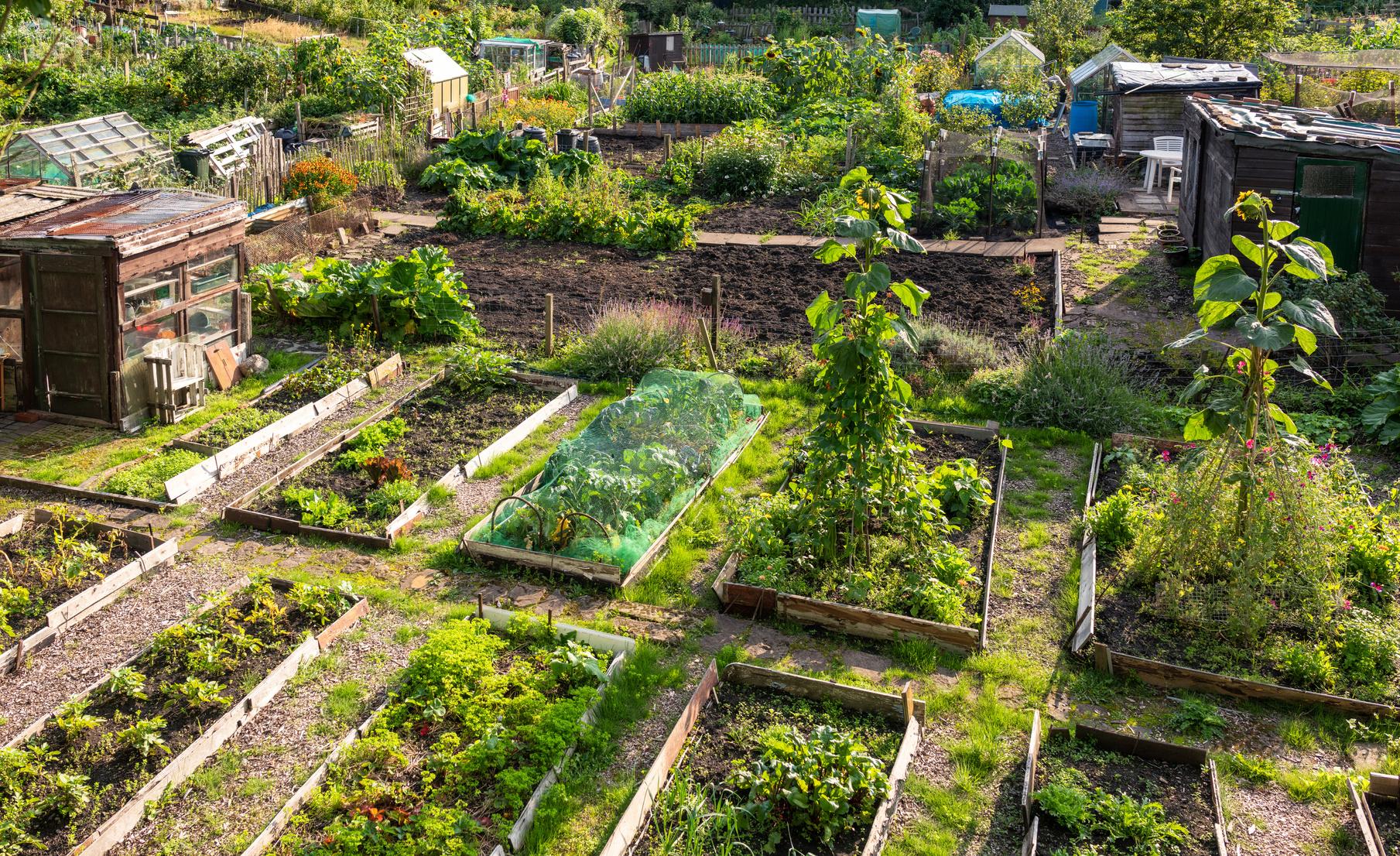
My visions for humane animal futures centres upon education systems teaching interconnected thinking about the climate crisis (see Teach the Future) and for scholars/activists/artists to work together with educators to create spaces for collective, collaborative and imaginative futures thinking within and beyond formal curricula Collective, intersectional stories (see Good Energy Playbook) should also contribute to alternative media frames that situate multiple voices and perspectives, and envision new social worlds in a future that must be playfully and hopefully in the present.
Suggested Readings:
Loach, Mikaela, 2023 It’s Not That Radical: Climate Action to Transform the World London: Dorling Kindersley

Ko, A and Ko, S, 2017 Aphro-ism: Essays on Pop Culture, Feminism and Black Veganism from Two Sisters. Lantern Book.

Future Statement on a Just and Sustainable Animal-Centric Future
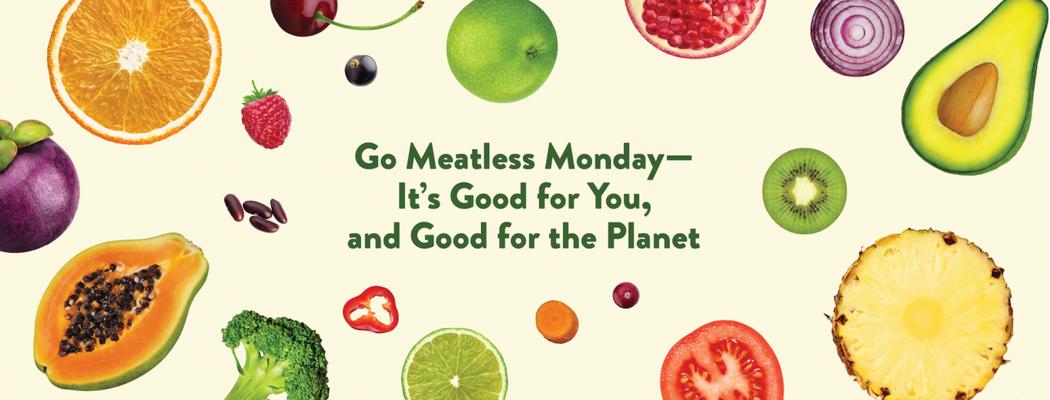
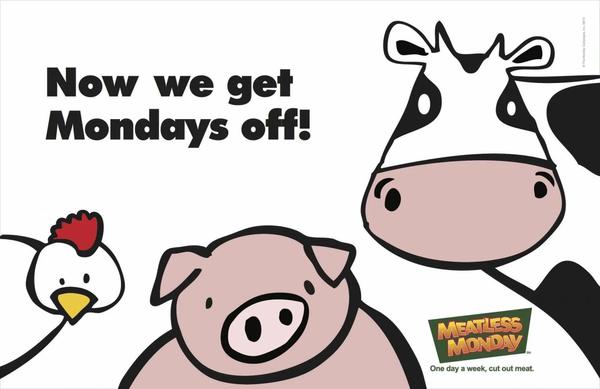 By Norie Ross Singer
By Norie Ross Singer
The nature/culture dualism is a major source of violence and oppression in animal and environmental communication. By isolating nonhuman and human oppressions from each other and treating nature and culture as internally homogenous categories, this dualism denies how all oppressions derive from the same foundation The animal-centric horizon beyond the facade of a human-animal divide holds the promise of widespread recognition of the fragile, communicative constitution of this dualism and its distortion of how power operates
One strategy for reaching this future horizon is renovating human oppression-focused academic theory and activist praxis to center the mutually reinforcing relationship between human and nonhuman injustices Likewise, animal and environmental communication theory and praxis must center the interconnectedness of nonhuman and human oppressions Here, intersectionality, a focal concept in critical animal studies and topic of emerging interest in animal and environmental communication studies, is our best guide. Although intersectional work takes many forms, one form that I wish to highlight from my own scholarship is the constructive critique of meat consumption discourses appealing to “ornamental intersectionality” (Bilge, 2013, p. 408). This thin display of virtue recognizes differences of identity while obscuring the relationships between identity-based oppressions and stripping intersectionality of its transformative politics. In my ongoing research on Meatless Monday (MM), I show how some flexitarian advocacy implements ornamental intersectionality within a neoliberal discourse and functions as deradicalization, appeasement, and containment of resistance for vegan human-nonhuman justice To give an example, several years ago, this meat-reduction campaign announced its support of Black Lives Matter and food justice without engaging them further The campaign’s rhetoric on these and related issues positions MM in a forward-looking and celebratory posture regarding its aiding of meat reduction across diverse communities However, this posture is in image only, without commitment to concrete actions In fact, contradicting its stance, MM has increased its nonprofit promotion of the corporate fast-food chains known as chief culprits of food injustice
Despite this disingenuous discourse, meat-reduction initiatives have an opportunity to play a meaningful part in just and sustainable animal-centric worldmaking. MM’s role might begin with reckoning with how its historically apolitical approach and more recent ambivalent approach of mixing progressive political appeals into its neoliberal discourse falter. If genuinely committed to issues such as food justice, the campaign must dispose of the noted ornamental intersectional rhetoric, which is consistent with what some scholars describe as multicultural neoliberal discourse This multicultural neoliberalism aligns with the campaign’s historically narrow emphasis on individualist consumer choice messaging rather than deep systemic problems and collective organizing MM’s future must entail overcoming neoliberalism’s normative ambivalence toward the latter Moreover, MM should grow beyond its heavy focus on an individualist frame of personal health and its failure to illuminate how health intertwines with multispecies justice and sustainability While survey research shows that most US residents engaging in meat reduction prioritize health reasons, this should not limit MM as it educates people on the much more complex and robust case for not only reducing, but gradually eliminating meat To rupture MM’s implied conclusion that main benefits or consequences of not eating meat mostly pertain to the individual, the campaign’s future should involve demonstrating how meat-eating culture reinforces and is reproduced by a web of interconnected nonhuman and human oppressions This future ought to be one of vividly showing audiences what it looks and feels like to build a nonviolent, just, and sustainable world around food not sourced from nonhuman animals
Suggested Readings and Resources:
Leyva, J. C. (Director). (2019). The invisible vegan [Film; online video].
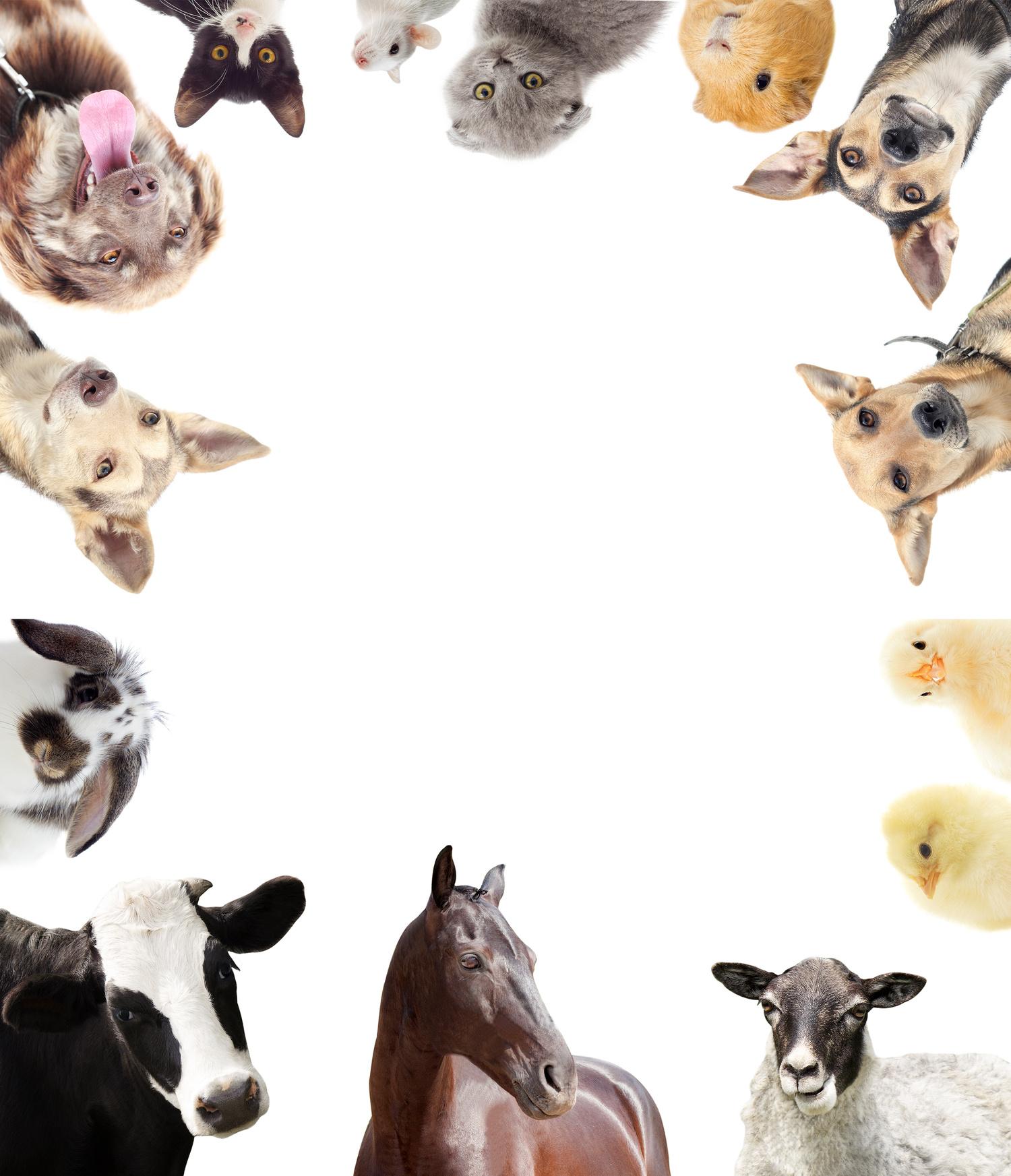
https://theinvisiblevegan.com/
Nocella II, A. J., & George, A. E. (Eds.). (2019). Intersectionality of critical animal studies: A historical collection. New York, NY: Peter Lang. Vegan Feminist Network. (2023, May 20). Resources.
https://veganfeministnetwork.com/resources/
Intersectional Organizing, Animal Rights, and the Future of Environmental Justice
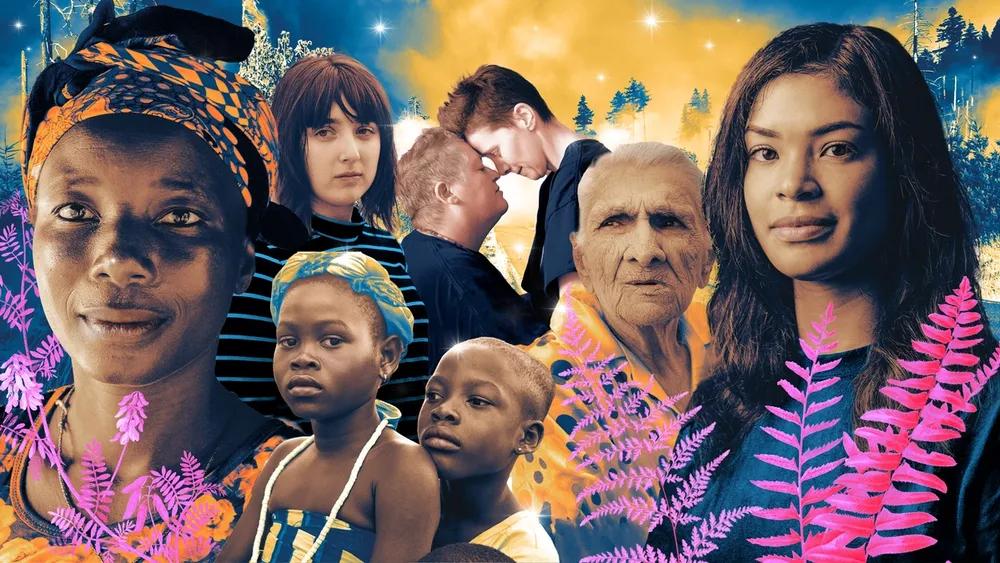
 By Emily Plec
By Emily Plec
The MOVE organization is a powerful family of revolutionaries, fixed in principle, strong in cohesion, steady as the foundation of a massive tree. –from the Teachings of John Africa
For the last decade, an environmental activist has been killed every two days. In the one year after officer Derek Chauvin murdered George Floyd in a high profile case that catapulted the Black Lives Matter movement, police officers killed at least 229 Black people. In 2021 and 2022, fatal violence was committed against at least eighty-eight transgender and gender nonconforming people. And due to a wave of legal and political maneuvering by right wing Republicans (in addition to an already prevalent rape culture), pregnant people in the U.S. are now experiencing a peculiar affiliation with nonhuman animals subjected to husbandry, having lost control over the conditions of their own pregnancies.
We are not the only ones experiencing fatal violence at the hands of other humans - and the racist, capitalist hetero-patriarchy that some segments of humanity continue to foster and promote. The deck is stacked high against both the proponents of social/environmental justice and nonhuman animals.
I came to communication interested in social change, reproductive rights, gender and racial justice. From that standpoint, and as a white, middle class, pansexual environmentalist, I cannot disarticulate the nature I know from the social and cultural formations in which I am implicated. Consider two cases: the first highlights how racist law enforcement action was used to silence and suppress a radical Black vegan movement and the second shows how multinational corporate interests utilize clandestine violence to disrupt the leadership and activism of powerful intersectional movements.
On two separate occasions, in 1978 and 1985, state violence was used to enforce the evictions of a group of radical Black vegan activists known as MOVE. The first incident involved gunfire and the death of a police officer, for which nine members of MOVE were held accountable with life sentences in prison. The second incident has the ignoble distinction of being “the only aerial bombing against U.S. citizens on U.S. soil” and resulted in the deaths of 11 people, five of whom were children, and the destruction of 61 homes in the neighborhood.
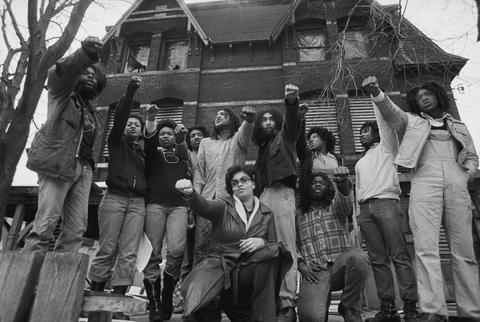
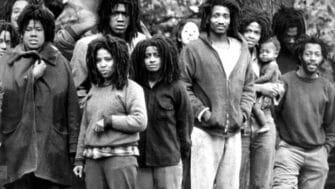
https://wwwzinnedprojectorg/news/tdih/move-bombing/
The high profile 2016 murder of Berta Caceres for her leadership in COPINH, opposition to the Agua Zarca dam project, and her effectiveness at coalitional organizing further illustrates the nature of the threats environmental justice activists face. Caceres’s murder was ordered and directed by David Castillo, a West Point trained former Honduran Army intelligence officer and president of the company building the dam that Caceres and others were protesting. Water and land defenders (people who stand in solidarity with other species) face threats of violence and assassination if they persist in organizing against often multinational interests in the exploitation of the planet for profit Other environmental and animal rights activists face charges of terrorism (Potter)
Yet these examples also illustrate the significant role that human solidarity with animal interests can have in forging community, developing strength, and threatening abusive and destructive systems of power The vision I hold is illustrated by John Africa’s metaphor of the massive tree, whose root structure is the intertwining of organizations, interests, and capacities In this vision, corporate leaders are displaced by community councils (“powerful families of revolutionaries”) who would not dare take on a project or institute a program without consulting across the web of affiliations and associations, understanding the impacts on diverse individuals and their networks of support, taking time to listen to the land and other animals, and using technology to predict impacts that our senses and standpoints are too limited to perceive
In the short view, it is a vision that challenges the carceral logics at work in the constraining and punishing of people who are BIPOC, LGBTQ, and working class Its gospel is grounded in the understanding that such ideologies are inextricably tied to practices and policies enabling the enslavement and consumption of other animals And it manifests in a both-and approach to organizing and reciprocity that depends up on us showing up for each other and expecting others, in return, to show up for us and for animals

Suggested Readings:
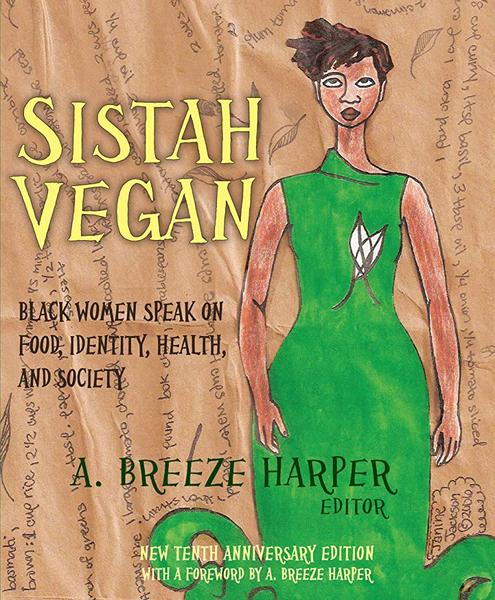
Del Gandio, Jason & Anthony J. Nocella II, Eds. (2014). The Terrorization of dissent: corporate repression, legal corruption, and the Animal Enterprise Terrorism Act. NY: Lantern Books.
Kendi, Ibram X. (2019). How to be an anti-racist. NY: Random House: OneWorld. Potter, Will (2011) Green is the new red: an insider’s account of a social movement under siege. San Francisco: City Lights Books.
Positive AnimalCentric Future Created by Human Animal Earthlings
By Carrie P. Freeman"Dryad" by malamy6
I envision a world where humans resolved our ecological and social justice crises and mass exploitation practices by identifying individually and culturally as “human animal earthlings,” where we humbly recognize we’re one species sharing a home planet with millions of other vulnerable and interdependent species As Human Animal Earthlings, we embrace our animality, despite differences in capabilities or appearances, rather than arrogantly denigrating and discriminating against any other sentient individuals as mere pests or utilities. Rights movements for nonhuman animals, humans, and nature are allied as part of a “One Health” effort for mutual wellbeing.
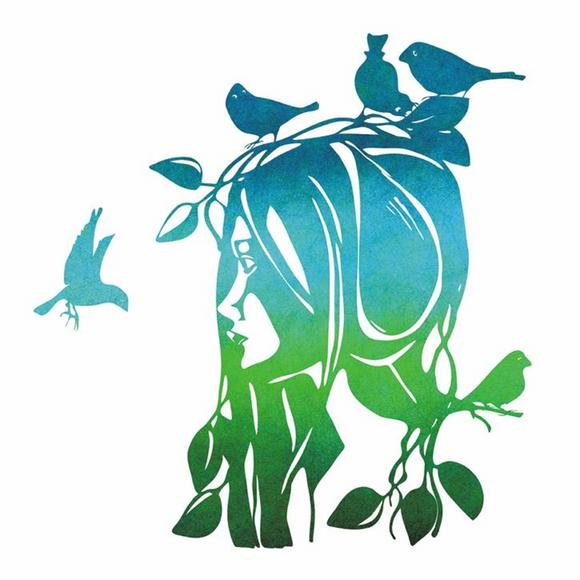
We ended mass extinction and repopulated the planet with millions of biodiverse species by instituting biologist E O Wilson’s HalfEarth Project and dedicating half our planet’s land and sea areas for free-roaming animals to thrive and migrate safely in coexistence with us (where human activity is not commercial or damaging) We manage our own human population fairly through supporting women’s rights and lessening impacts through widespread green design and consumption, including transitioning to veganic/organic, plant-based food systems (with some indigenous communities practicing subsistence hunting where needed). We no longer use or keep captive other animal individuals for
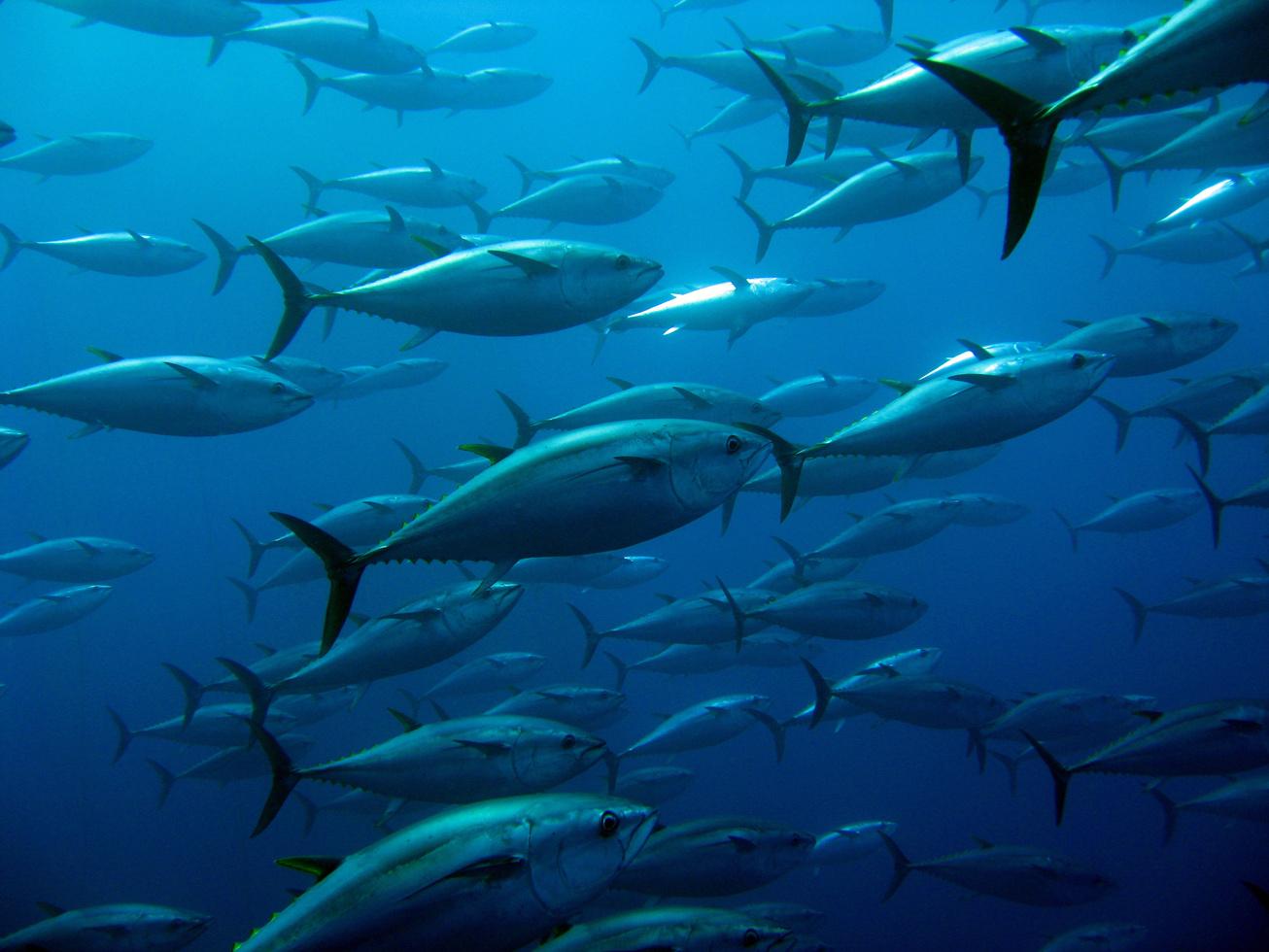
food/farming, entertainment, research, clothing, or any other utility, and we don’t breed and domesticate anyone. We do offer shelter, care, and companionship to orphaned or injured animals in need and offer some support to free-roaming nonhuman animals when compensation is warranted for our human interference degrading their habitats and livelihoods. Rather than traditional “wildlife management,” we practice “compassionate conservation” methods that respect sentient individuals, so that we disallow lethal and anthropocentric ‘solutions’ to conflicts.
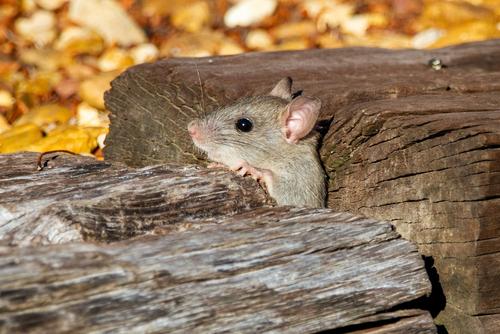
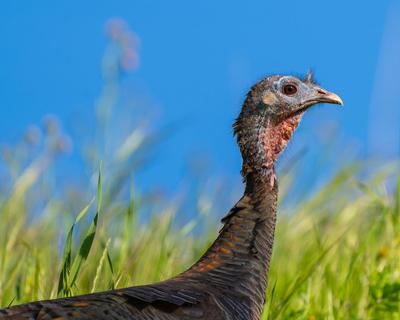
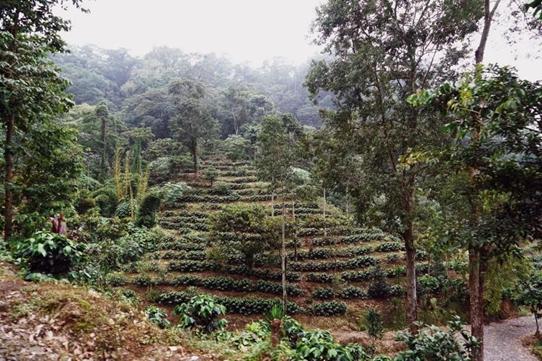
This means coyote families can leave their dens at dusk and roam city greenspaces without fear of getting shot or getting their legs clamped in a trap Bluefin tuna can speed through Atlantic waters, fearing only the many sharks and whales, and not entrapment in nets or long-lines of hooks Bees and songbirds find plenty of food in all the native plants growing throughout towns and agroecological forests, free of poisonous chemicals Bison, wolves, and grizzlies can roam across prairies and forests, traversing highways via overpasses, regardless of park boundaries, as no hostile humans recreationally hunt or ranch animals Humans coexist with little creatures in their neighborhoods, from rats to rabbits, with non-lethal, non-toxic ways to protect veggie gardens and homes. These rats and rabbits also don’t experience entrapment as pets nor as experimentation subjects, living freely as fellow earthlings not underlings. And the only hens, hogs, turkeys, sheep, and goats on earth are wild/free species.
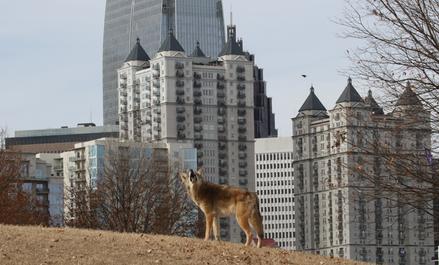 Finca el Platanillo Guatemalan coffee farm by Creagh Cross
Coyote in Atlanta's Piedmont Park by Larry Wilson/ Wild turkey in California by Y S Unsplash/ Roof rat in TN by Joshua J Cotten Unsplash
Finca el Platanillo Guatemalan coffee farm by Creagh Cross
Coyote in Atlanta's Piedmont Park by Larry Wilson/ Wild turkey in California by Y S Unsplash/ Roof rat in TN by Joshua J Cotten Unsplash
This biocentric outlook and investment in our planet’s livelihood is accomplished via global democratic participation that transcends corporate lobbying by enacting campaignfinance reform and fair elections that foster widespread voter participation in independently-drawn (non-gerrymandered) districts, ensuring diverse political representation equitably based on population and needs. In schools, we instituted humane education, media literacy, and civics.
While protecting free speech, we regulated global media to reduce co-optation of the public sphere by the highest bidders and those spreading disinformation Robust public, nonprofit media –largely led by women and people of color – is well-funded and accessible to all (alleviating the digital divide); this media serves the public interest by providing information and cultural storytelling representing our multicultural world (including nonhuman animal cultures)
Suggested Readings and Resources:

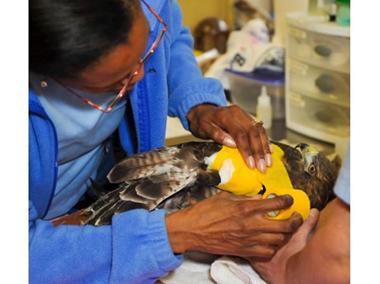
AnimalsandMedia.org offers respectful and inclusive style guidelines for media-makers and media-users (co-authored by Debra Merskin & Carrie Freeman). https://animalsandmedia.org/ Centre for Compassionate Conservation at Univ of TechnologySydney conducts transdisciplinary research worldwide to develop compassionate approaches to conservation challenges https://www uts edu au/research/centre-compassionateconservation
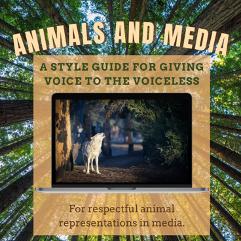
Sentient Media news outlet and writers’ collective; “a nonprofit news organization that is changing the conversation around animal agriculture across the globe.” https://sentientmedia.org/ We Animals Media brings visibility to hidden animals through compelling photojournalism They share their photo archive with animal advocates https://weanimalsmedia org/

Animal-related excerpts taken from the Sustainable Futures
Moral Vision statements written by students in Professor Freeman’s “Communicating Environmental Issues” undergraduate class at Georgia State University, 2023
At the end of our document on animal-centric futures, I thought it would be interesting for you to also read what Gen Z college students in Atlanta chose to write about human-nonhuman animal relations as part of their ideal future vision statements for a 2023 class assignment (where it was not mandated to speak about nonhuman animals specifically, but the task was just to explore what a green and just future society would look like).
“I also believe in the rights of non-human animals to be free from unnecessary suffering and exploitation, and that humans have a responsibility to treat them with compassion and respect In addition, I believe that environmental justice is a crucial part of a just and equitable society We must take responsibility for our impact on the planet and work towards sustainable practices that preserve the health and well-being of all living beings”
“It is crucial that we recognize the inherent value and dignity of all living beings, including both humans and animals As we continue to advance technologically and socially, we must ensure that our actions align with this principle and that we protect the rights of all beings to live free from harm and exploitation This includes taking steps to prevent and address issues such as animal cruelty, human rights abuses, and environmental destruction We must also work towards a more equitable society that recognizes and addresses systemic injustices, including those that affect marginalized communities and animals By prioritizing the protection of all living beings, we can create a more just and sustainable future for ourselves and future generations
“My next major concern is the extinction of the entire aquatic ecosystem Our aquatic ecosystems are in extreme danger These ecosystems suffer mainly from overfishing, pollution, and unjustifiable murder (ex whaling) It is extremely difficult to make 7 8 billion people stop eating seafood as a source of protein, but it is more realistic to increase the restrictions on overfishing and brutally murdering animals Ideally, the world would be much healthier (weight, diseases, illnesses &, etc ) if everyone was vegan, but not everyone is willing to give up a habit they’ve had since a 1-year-old ”
“This is another way we can save our planet I believe that overfishing is another harmful thing to our planet, because it would lead to fish going extinct It is harmful to our fish for no reason, because when you overfish, it is just having more fish than you need and some of the fish goes to waste anyway ”
“Solar energy is now cheaper than every other source and we still cannot imagine a world where our power grid is entirely sustainable. We cannot imagine a world where nobody eats meat. I would be happy if my contribution was helping us get to a world where those ideas were feasible rather than fanciful.”
“I would like for the oceans to be free of plastics and have marine life not being interrupted by ships and human activity I have hope that somebody in our lifetime will figure out a way to get rid of plastic pollution forever or at least turn it into something that is not as harmful as it is now The goal is to have plastic waste down by 100% of what it is now and to have a better alternative I would also like for our meat consumption to be more humane and not how it is now, it would be perfect if the world was vegan, but I have to be a little realistic ”
“I hope that humans become more aware of our surroundings and understand that every living thing on Earth deserves the same respect We would definitely have to look at the ways of the indigenous people to see how they treated the lands and with our technology we would be able to combine our knowledge to be the best to the planet ”
“Before and even now after taking this class, I realize that change starts within and that I cannot preach nothing that I do not practice With this being said I am going to try my best to reduce my single plastic use, I am also going to be changing my diet I plan on not letting overconsumerism get to me and only buying what I need and not feeding into these companies’ greed I also plan on using my voice by advocating for people and animals who are not able to by writing to companies and engaging in social media post, protests, boycotts and anything else when I have time to do so As childish as it may seem, I just want animals and humans to be able to live together in harmony and not fight over resources, being inhumane to one another, and being able to live a quality life as we all are supposed to do ”
“I hope to see that instead of cutting down trees to create land that will most likely go to waste within the next ten years, that humans plant more trees So, that we can be provided with cleaner air and that the animals that inhabit these areas are able to climb, run, hang, and do whatever they want ”
“I seek a system that harmonizes human activity with the natural world I reject the belief that humans require the consumption of animal products daily to maintain a healthy diet I believe in a society where farming practices are strictly monitored by government entities and animal rights are criminally punishable to deter overcrowding and animal abuse Likewise, diets such as veganism and vegetarianism should be rewarded through taxes right offs and breaks "
“When people have more wealth, they are able to get better resources when it comes to having a cleaner environment to live in, and being able to have healthier options when it comes to food. Another thing, having more knowledge about animal and plants would help us make better decisions in our food choices. I hope the world we live in all adapt to more plants in their diets instead of meat. Plants nourish our bodies more, and can help cure diseases that medicine only suppresses until a later date. I hope we have a world that’s is fulfilled will a greater love for our animals, and they be treated how we want to be treated. I believe having knowledge brings understanding, and we need to be informed because of our selfish needs, animals are being killed due to fun, clothes, and food. Animals deserve to live in a world where they can thrive, and evolve, and not be what was for history within our environment. I believe that animals should not be captive, but have a wider range to live their life thoroughly. A vision for the world that all the waters that cover the earth is pearl blue, and there is no waste that’s dumped in our waters so our sea animals can thrive. Our people, animals, and plants all need to be able to have clean water, because water is so important for all of us.”
“If we had a society where our food didn’t poison us Our society would better if we all had the opportunity to plant our own vegetables with real nutrients Even if the government still had control over the food we eat, it would be managed in the proper way by families who own the land In a better world, we would also not drink cow-based milk, our milk would come from the plants We wouldn’t eat high portions of meat. People would be raised as vegans, unless asked otherwise by doctors ”
“A world that brings in animal and nature rights and understanding that nature and the human and the world’s wellbeing comes before making a profit I would love to see a future where we can respect that animals, plants, and the earth all have rights to have access to being healthy and living in an unpolluted environment I would love to see a world where we do not have a new animal becoming endangered or extinct every week One where beaches, oceans, forests, mountains, swamps aren’t full of chemicals and trash A world where coral reefs, rain forests, deserts, marshes, and all nature is brought back and allowed to grow to its natural state, ”
“A world where the meat we eat is grown in a lab and we have let animals just be I’d like to envision a world where massive corporations put time, effort, and resources towards sustainability and helping our planet be healthy A world where animals are happy and free ” “I envision a world where the reefs have come back and the ocean is thriving and protected Commercial fishing has been done away with and its left to local coastal communities ”
“A way we can be environmentally conscious I also see us changing the way we eat I hope that a lot of us convert to being pescatarians, vegetarians, or vegans Food choices are truly important and affect the environment By eating more plant-based food and less meat we reduce global warming, preserve our ocean resources, and preserve our oceans Eating less chicken means we reduce the number of greenhouse gases we put into the air We also have many toxic ingredients in our foods here in the United States that are banned in the countries For example brominated vegetable oil, olestra, genetically modified fruits and vegetables, and growth hormones "
“In my dream world, we would treat all living species as individuals. Currently, I feel that we don’t have as much respect for animals as I feel we should. As a human being living on this Earth who has a voice, we need to take more responsibility for the way animals are being treated who have no voice. Many times we treat animals as if they will never go extinct and have unlimited lives. Eventually, if we keep killing these animals for personal benefit, they will become extinct. I hope that in the future we all try to preserve the animals we have left on Earth. This includes the non-pet animals, the animals who are out in the world. We will treat them with respect, give them what they need to thrive, and not invade their space. In the world today we invade animals’ space and push them out of their homes, leaving them nowhere to live all for personal profit. In the future will be many more laws that protect animals and their space. There will be more restricting hunting laws, prohibiting hunting animals for profit and personal benefit.”
“I picture a world where humans and animals aren’t afraid of each other. It is our duty as humans to protect these creatures from our demise. The first thing we could do to start this process is stop teaching about the food chain. The food chain makes humans superior to animals; we are the invaders. We move into their communities and cut down their habitats and they’re left alone and defenseless. It may be extreme to eliminate the concept of the food chain, but we can change how it is taught. There are way more humans than animals, so we should be at the bottom and the most endangered animals should be on top. This is a better representation of how special/delicate each group of species is.”
“As a species, all we have done is constantly destroy the world around us and kill the habitats and take the lives of the animals we share this earth with It is about time we changed that before it is too late We have killed millions upon millions of animals for reasons that just simply don't make sense. And simply I think it all boils down to our misunderstanding of nature and human greed If we just took the time to study/learn about different animals that live near us, we will see all the good that these animals do for us We kill animals because we are scared of them or because we have given part of their body a monetary value. We as a society fail to understand/respect the complexity of the emotions and relationships that animals have We have somehow come to some misunderstanding that animals are beneath us just for the sole fact that they aren't human But as a Christian, I believe that God has created this earth for us to enjoy and nurture From the beginning, we were meant to live among nature but as I stated earlier it was human greed that took us away from that connection With that being said, I think that we can get that connection back to nature With worldwide collaboration and understanding, I think that a sustainable world for all animals is possible ”
“It is simply heartbreaking and honestly truly embarrassing how poorly we have treated the ocean and the inhabitants of the ocean We have effectively put a doomsday timer on the ocean that with every passing day is getting faster and faster We are destroying sea flora at alarming rates and worldwide we kill more fish and mammals at an absolutely insane rate Millions of fish have been needlessly killed for oftentimes no reason at all In a study it has been discovered that at the rate we are fishing and harvesting materials, we will run out of fish in the ocean by 2048 What people fail to realize is that if the ocean ecosystem dies, then we all die We are unknowingly putting that doomsday timer on ourselves as well But not all hope is lost, if we substitute all fish in our diets then we can give all fish populations the ability to replenish themselves ”
“My most ideal future consists of a world in which human and nonhuman animals coexist among each other in harmony, regardless of species. In order for us to achieve this, humans would need to come to the realization that we are not above any other species of animal, as we are animals ourselves. This concept could lead us to truly understand the importance of our relationships with each other, one’s that instead bring abundance and peace for all animal species. In the process of humans acknowledging this level of fellowship among all species, we would see an end to the racial injustices and gender discrimination, as well as an inclusivity of everyone regardless of their sexual preferences. As we discussed previously in class, this sort of future is tangible once we realize that the social issues that we fight for go hand-inhand with the animal rights and environmental issues movements. For us to bring about this kind of solidarity for all animals, we must merge these issues and put an equal amount of importance and effort towards them.”
“In addressing the above, this sort of symbiotic relationship would encourage great political reform that emphasizes care for others and puts forth policies that bring about positive change to both animals and the environment. We would see the development of this idea that in order for us to thrive happily, we must ensure that our ecosystem and the natural world is well taken care of. Life would be so abundant everywhere. Human animals would accept their own differences, but be able to admit that we share so many similarities with other life forms, more than most probably know due to limited knowledge of others. In doing so, human animals would find a way to do the things they enjoy in a way that is not disruptive to other animal and plant species.”
“Nonhuman animals would no longer be used as test subjects in human animal experiments. We would recognize and understand that these beings are sentient like us and express their own thoughts and feelings in ways that are different, yet just as important to our own. Overall, this mindset of legitimate equality, regardless of race, color, ethnicity, gender, sexuality and species would encompass a new life where human animals, nonhuman animals, plants and all other biodiversity live in a harmonious and balanced state.”
“First, I imagine plant-based diets being more popularized. This would cut back on the slaughtered animal amounts drastically. This would also benefit the human population’s heart. If we cut back on the meat we eat, then the demand would go down. In return, the number of animals that would have to be genetically modified would decrease; causing the quality of meat to be better. Resulting in the overall health of humans being better as well. Other than moving to a more plant-based diet, the trend of “fast fashion” would have subsided by this time. The cut down on fast fashion would cut back on the high demand for animals and farmed resources.”
“I envision the polar caps glaciers still being intact and the seasons of fall, winter, summer, and spring to be settled at their rightful temperatures. In doing so, so many animals would not die due to habitat loss or from failure to adapt to their new environments due to climate changes.”
“By adopting practices such as recycling rather than littering, we would not only be helping with climate change but also with sustaining the lives of animals. More and more animals are dying due to the pollution of their habitats. They suffer just as much as humans, most of the time a lot more. In my ideal world they would not suffer at the hands of humans and would be seen more as equal to humans.”
“I envision a world fueled by compassion and empathy towards both humans and nonhumans We will no longer just consider what benefits ourselves the most but instead consider the effects we have on not only other humans but other non-human animals as well ” “We no longer just think about the short terms effects our decisions may have on our generation but value the long-term effects more I envision a world in which we view ourselves as creatures in a delicate ecosystem We cannot live and thrive without our neighbors, including our nonhuman ones Human rights and non-human rights on the same playing field We no longer view humankind as the center of the universe but instead one of the many parts of the universe we need to survive We will have respect for everything living and wish to treat all living things with the gentle care they deserve Non-human animals are considered as a part of the community and are considered when making decisions regarding the community ”
“Sustainability makes for a happy planet and happy inhabitants Clothes may cost more, but there will not be a child overseas working in dangerous conditions to make a jacket that will only be worn once We will learn the value of moderation and understand that overconsumption of animal products leads to an increase in greenhouse gasses One day I would like to join the community of vegetarian/vegan individuals, but I am not there yet ”
“The Garden of Eden is redeemable A place where man and animal walk together in peace can happen once again There are people that have gifts to rehabilitate and care for animals but choose other paths because it is difficult to make a living in that field Activists, farmers, veterinarians, park rangers, teachers, and conservationists, are vital and prominent components in a sustainable future for humans and animals alike We have the answers and the opportunity to take care of the planet that we have been given to steward The Garden of Eden is redeemable ”
“In the community I grew up in, everyone had a garden, and we knew the big farmers personally. We exchanged goods with our neighbors and bought from the farm. This did not include meat, but I never noticed growing up. As for animals, the best way to steer from eating meat is to have them as pets or have neighbors with livestock pets. We didn’t eat a lot of meat because the farm animals were treated like pets, not livestock. If we went to the store, it was often the farmer’s market. Clothing was either made (extra fabric became pillowslips, tablecloths, etc.), thrift, or renewed (pants to shorts). We used glass over plastic, and we minimized light usage (helps against light pollution).”
“The second component that would be most ideal in this future would be the increase of environmental justice Giving animals and their habitats voices and justice against human interference Animals can’t speak for themselves or seek help from humans so a world where they’re protected would lead to the sustaining of biodiversity and prevent the loss of species Animals should not have to worry about their habitat being destroyed in the name of capitalism Humans should only be able to build infrastructure out of necessity not solely for financial gain Destroying an entire forest for a factory is counterproductive, not only are multiple habitats lost but the furthering of pollution is inevitable ”
“The definition of a meaningful life is a constantly evolving concept that is not defined only by humans, as people do not define purpose or meaning on this earth, but it is decided naturally There is not hierarchy in any form amongst life forms as we are all placed on this earth to enjoy our time, and this allows for animal and plant lives to be seen as equal to human life ”
“By beginning the decolonization of institutions, religions/spiritual practices, and societal norms, this will lead to the equalization of all living beings, so that no matter race, gender, age, ethnicity, plant, mammal, amphibian, and so on, everyone is equal The decolonization of modern-day ideas would combat the common line of thinking that humans are superior to their animal counterparts, due to people being able to conquer and claim land as their own It instead promotes the philosophy that people are on the same level as plants, so we do not get to just conquer and claim land as our own as none of it is truly ours; it belongs to mother earth, and we just inhabit it ”
“Technology will also allow us to keep cloning certain animals for food sources. This could be good for the economy. However, the scientific production of animals may have health risks.”…
“I believe animals will create a closer relationship with humans as we learn more about them. We will soon learn a level of communication with humans that will allow them to not fear or attack us as often. This will also increase animal killing bans.”
“The world I envision is a world where sustainable practices are prioritized as a common practice, deeply ingrained in the way humans interact with the environment. It is a world where humans recognize the intrinsic value of all living beings and ecosystems, and where selfishness is nonexistent, replaced by a collective consciousness that prioritizes the wellbeing of the planet and all its inhabitants. In this world, society has fostered spiritual awareness and compassion, leading to a deep understanding of the interconnectedness of all living things, and guiding actions with empathy, mindfulness, and respect.”
“Another way to improve the environment is by keeping our animals safe. There must be a safe place for the animals in our habitat First and foremost, there needs to be less construction sites The more we build on land the more we’re taking away from the animal’s natural habitat. This increases the results of animals being run over due to the roads and highways systems as well Let alone the pesticides that are added into the grass and other plants in most residential areas This can harm a lot of wild animals that feed off the grass They can’t tell the difference when there are chemicals in the Earth They’re just trying to survive just as we are Also, we need to extend the parameters of national geographic parks I personally love animals but as I got older, I’m understanding that animals being held captive in zoos or aquariums is taking a way from being able to live in their natural state They’re now being raised and even sometimes tortured by humans to withhold this look to make money for mankind I’m intrigued to learn more about animals in their natural state and not what they appear to be when they’re locked up in a cage We need to advocate more for the animal rights because in many ways we’re just alike ”
“The last component is that we also consider the interests of non-human animals In this world, our decisions are guided not only by how and if actions will impact the well-being of humans, but also the well-being of non-human animals We wouldn’t ignore the interests of non-human animals if they could mean something positive for humans For example, we wouldn't destroy the habitat for a specific animal so that area could be used to build housing for people Achieving this notion of considering non-human animals would mean stopping and thinking of how we would feel if the actions we are forcing non-human animals to endure were directed at us To achieve each of the components, we would stop putting the interests of corporations ahead of the interests and well-being of the general public and nature ”
“The course also made me much more aware and conscious of my actions Not to say I was oblivious that actions like walking is better for the environment when compared to driving But honestly, I totally overlooked the impact of my diet on the environment and my use of plastics It has come to a point where I feel a bit embarrassed or ashamed to be seen eating meat or using plastic bottles.”
“As for my future, I plan to live a sustainable life, one which is simplistic, I plan to be fully vegan and to exercise frequently. I hope to be an example for others to be a ‘sustainable warrior’ as we combat climate change. Again, this class has really been enlightening for me. I initially chose the class because I assumed it would be easy, but in the end I’m happy I chose the class because it made me challenge my own personal beliefs, it made me change my perspective and it made me realize that there is always hope, as long as you try and never give up!”
“It is important that we also take note that considering animals as pests is very problematic. It implies that animals are a nuisance and unwanted. This attitude can result in mistreatment and inhumane treatment towards animals. It can also lead to the unnecessary extermination of animals, which can disrupt ecosystems and have unintended consequences for the environment. Animals play essential roles in ecosystems, and the removal of one species can have unintended consequences on the entire ecosystem. For example, the eradication of one predator species can result in an overpopulation of prey species, which can lead to environmental degradation. Overall, it is important to recognize that animals are an essential part of our environment and ecosystems, and we need to work towards coexisting with them in a humane and respectful manner. This involves taking into account the complex relationships between animals and their environment and implementing non-harmful methods of control when necessary.”
“I want to see a world where we recognize all nonhumans have value in our world, and not just the ones we consider pets We will be able to recognize that they feel pain, sorrow, happiness, and joy like we do, and that we can consider them as sentient beings and thus consume less of them for our own nourishment.”
“I envision a world where we work together with our planet and nonhuman companions to make a better place for everyone We as humans can consume less meat and more plantbased foods, eradicate animal cruelty and have better living conditions for animals such as farm animals ”
“But, we also forget that the planet cannot keep replenishing itself for good and that we as a species are causing it more harm than good I envision a world that not only advocates for human rights, but also for animal rights, that we should speak for the creatures of this world without a voice of their own to stand up for themselves
“I envision a world where we as humans stop claiming superiority over a planet that inhabited all creatures at the same time or even long before us Our self proclaimed inheritance over the Earth has caused its demise, we’ve been very unfair in the treatment of the planet that many species other than ourselves call home and they don’t deserve to pay for what they didn’t cause.”
“A world where our ecosystems thrive more abundantly due to our presence in the environment, not deteriorating because we are stripping away at the resources non-human animals use see as their own basic necessities A world where our growth as humans doesn’t imbalance the natural world causing redistribution of animals from their habitats, deforestation of trees older than our grandparents, and mass production of sea creatures being used to soothe our guilty pleasures I envision a world where we put the needs of our planet over our own because ultimately it would lead to the greater good for us all ”
Letthisnotbetheend
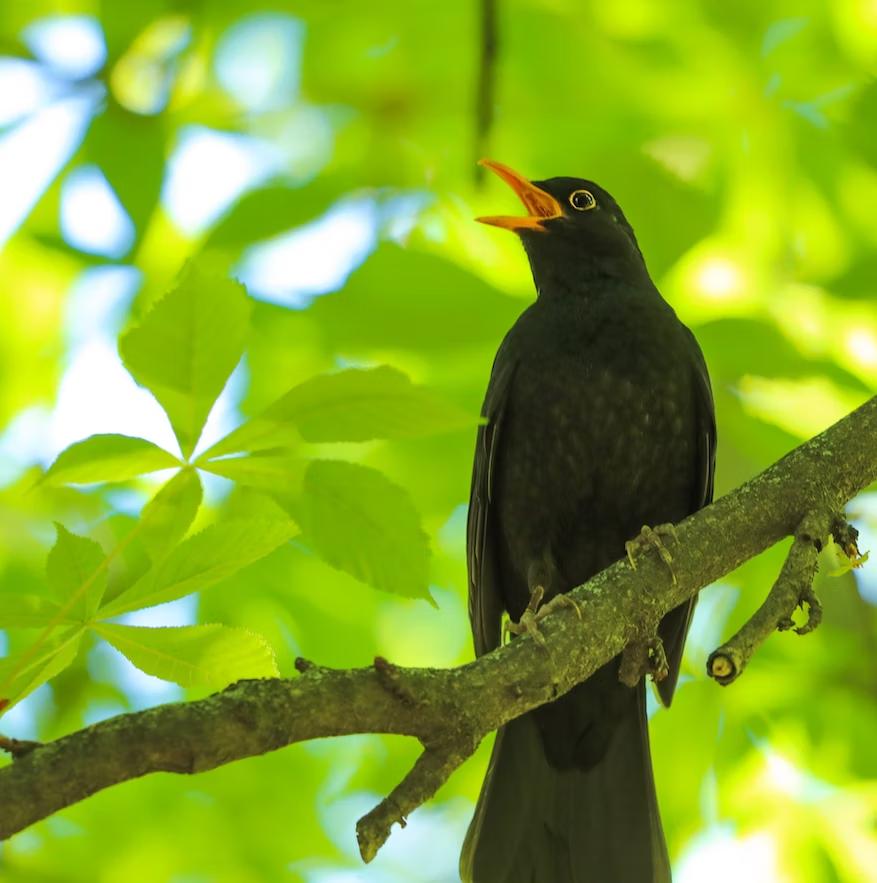 Designed by Jo Marras Tate
Designed by Jo Marras Tate
